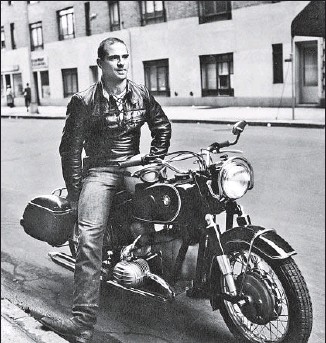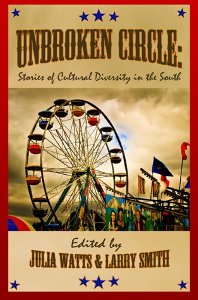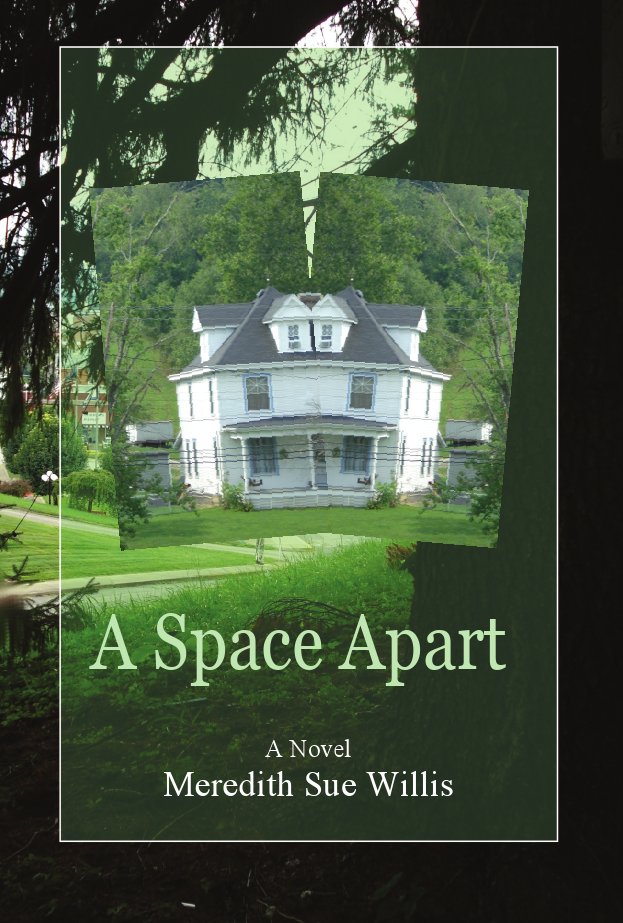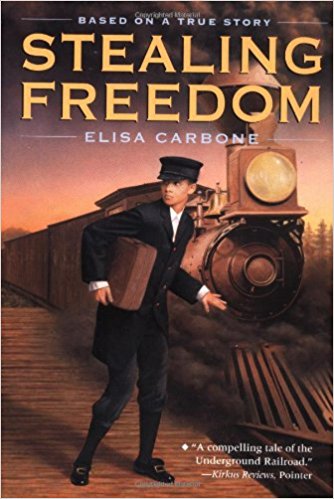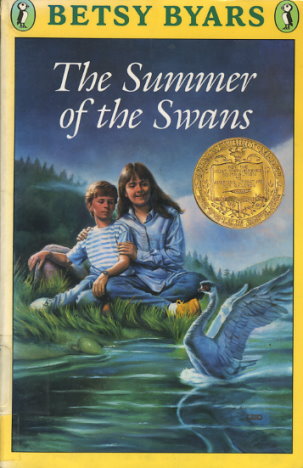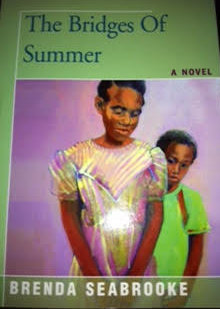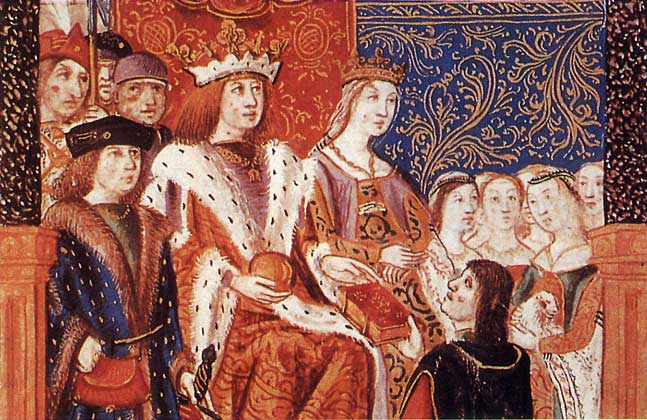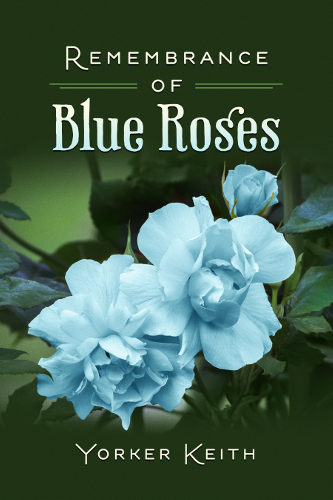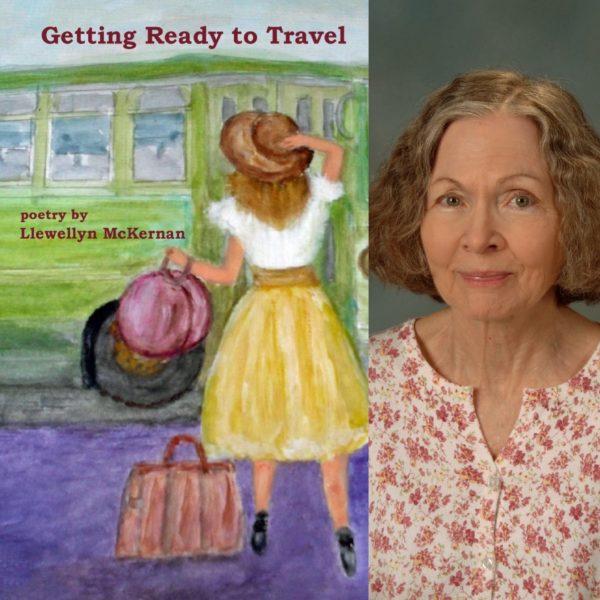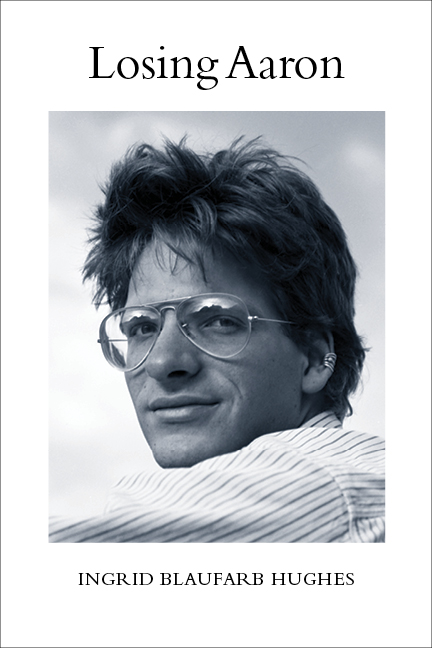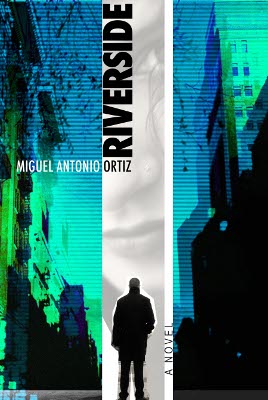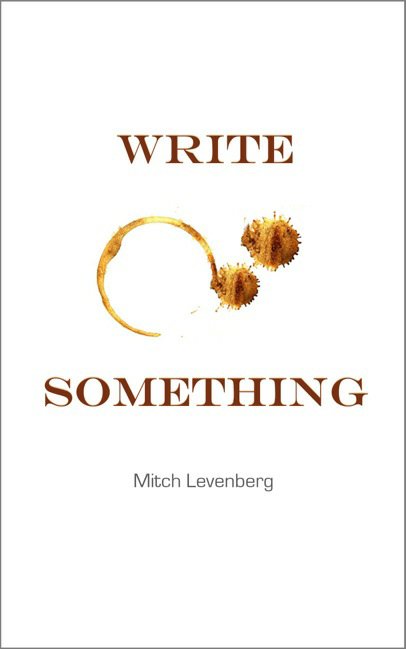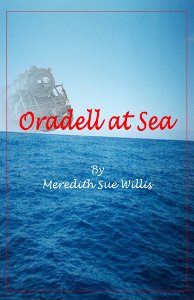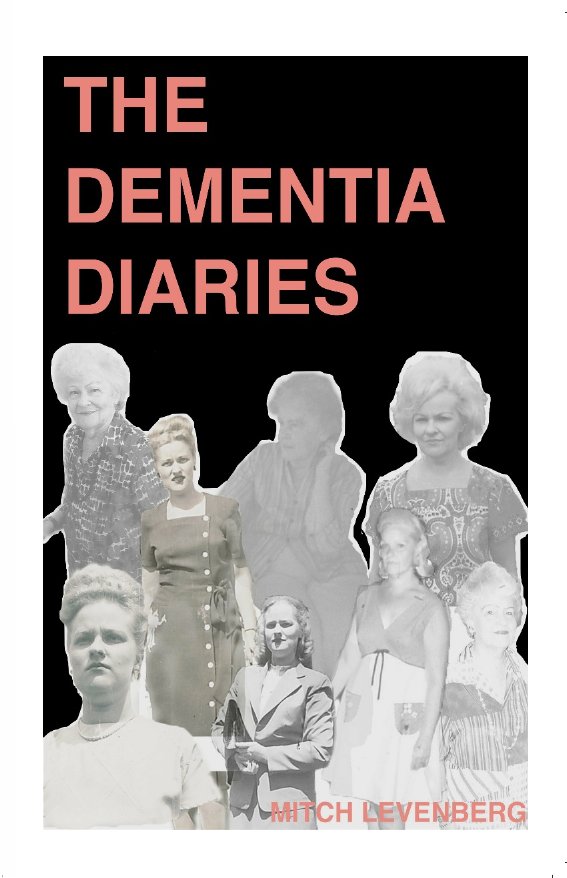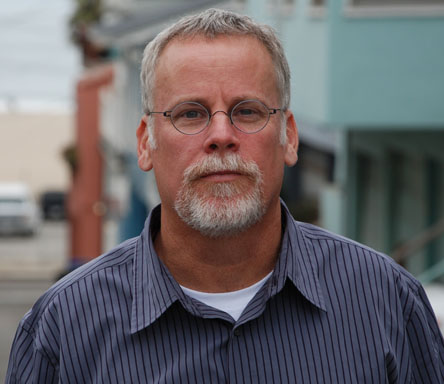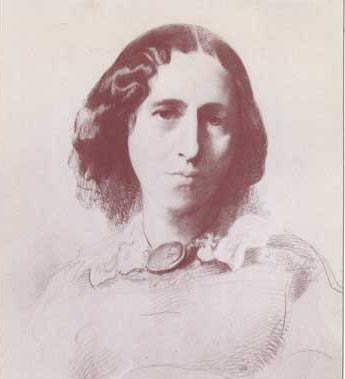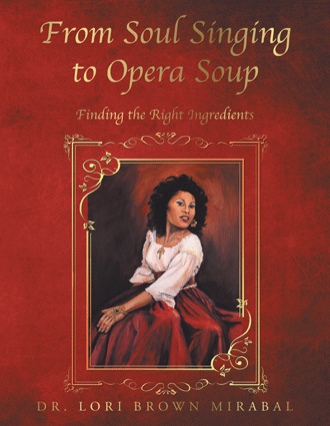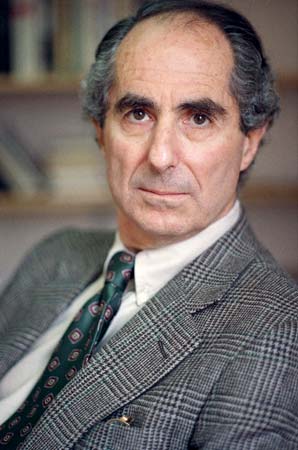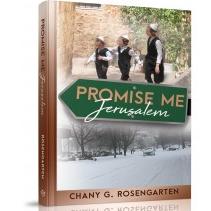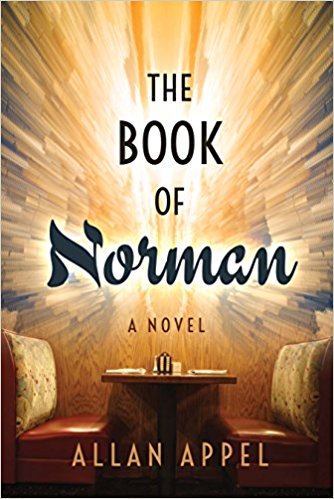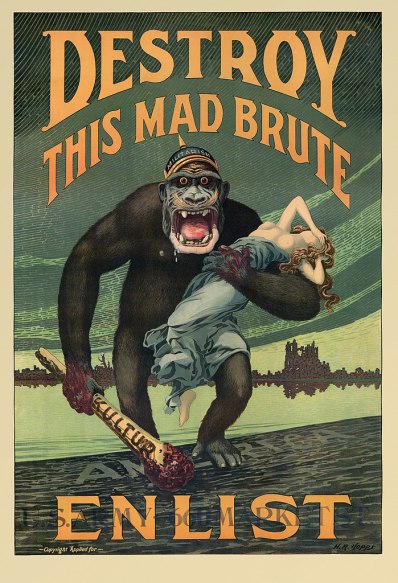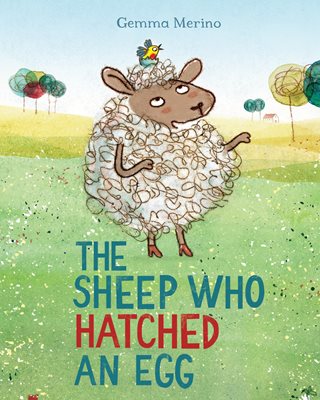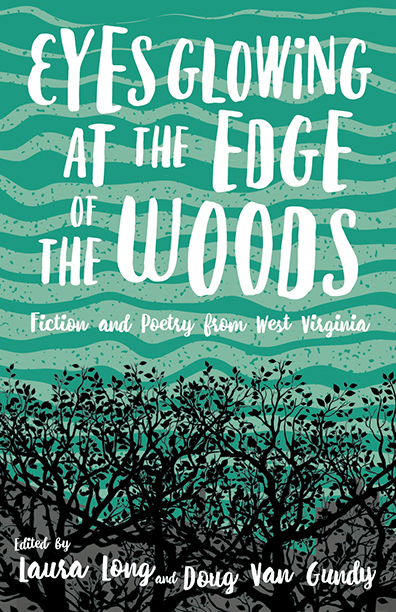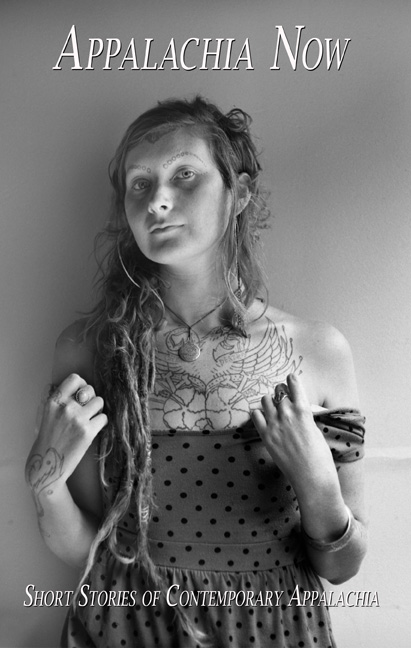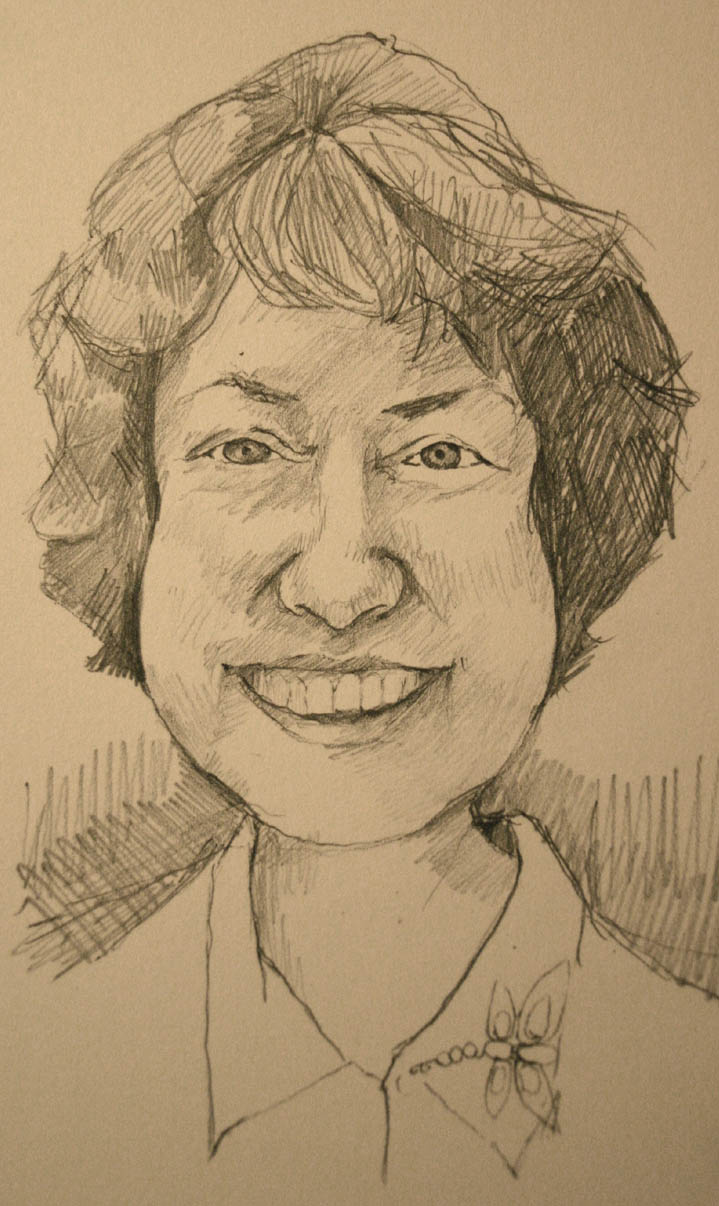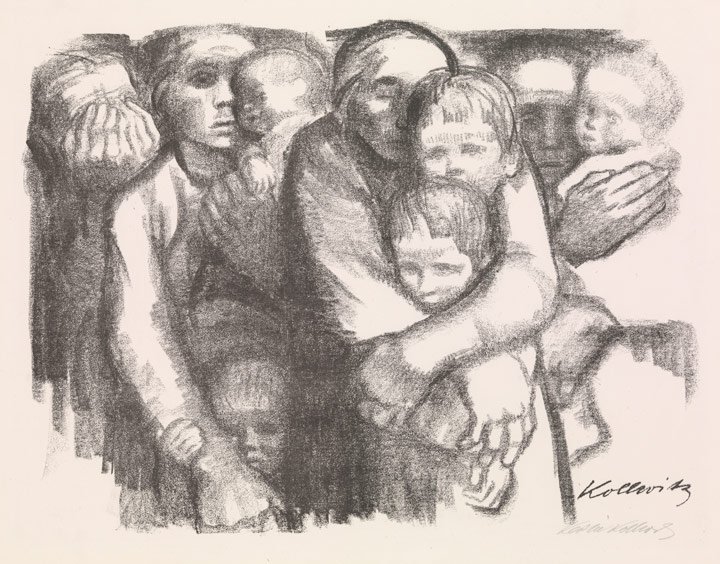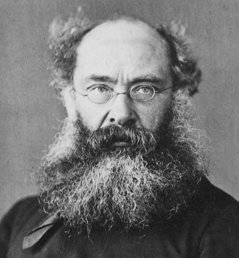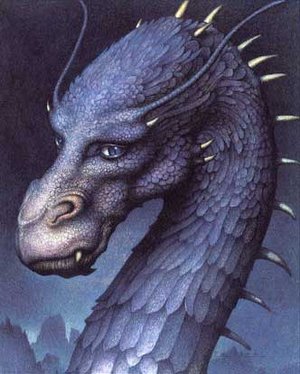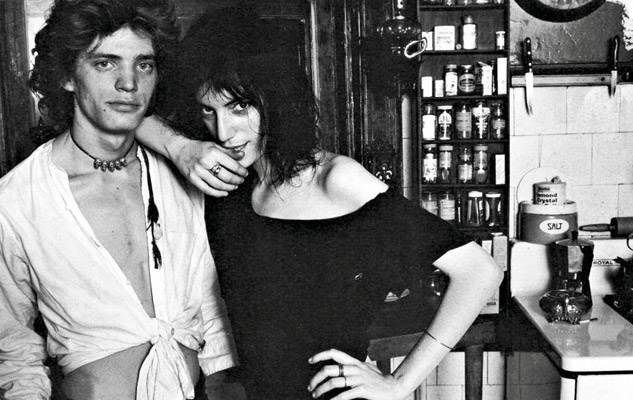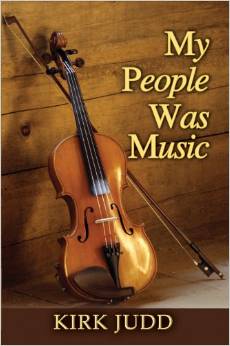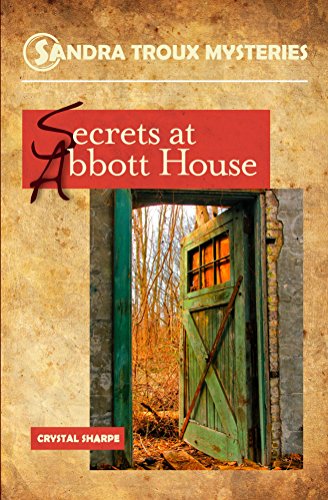Books for Readers Archives #191-195
Meredith Sue Willis's
Books for Readers # 191
June 29, 2017
When possible, read this newsletter online in its permanent location.
Back Issues MSW Home About Meredith Sue Willis Contact
.
Our friend, Lee Maynard,
the author of Crum, has died.A correspondent of Lee Maynard's, Christine Willis, writes to share Lee's response to her question about whether he had been raised in the Baptist Church. He said, "Baptist, yes. Southern, hard-shell. Narrow minded. Wild-eyed. Terrified of an angry God. (And those were the more liberal ones.) Raised? Hmmm, I can't really call it being 'raised.' More like -- kicking, screaming, pounding on the floor . . . (you get the point). I come from an entire family of church-goers, all except me. Have done a lot of probing and in the process have looked at a lot of religions, but not one of them seemed to be looking back."
Meredith Sue Willis's Books for Readers # 191
In This Issue of Books for Readers:
(If there's no byline to a review or comment , it's by MSW)
Phyllis Moore's list of Appalachian Young Adult literature
Unbroken Circle: Stories of Cultural Diversity in the South
A Space Apart
The Strawberry Moon by Victor Depta
Concepcion and the Baby Brokers by Deborah Clearman Revisited
The Price of Salt by Patricia Highsmith
Imperial Spain 1469-1716 by J.H. Elliott
Stories by Nathan Englander
The Fifth Season by N.M. Jemisin
On the Move by Oliver Sacks
Reader Reviews
Things to Read & Hear Online
Announcements and News
Irene Weinberger Books
NEW! YA BOOKS BY APPALACHIAN WRITERS!
Phyllis Moore has created a rich list of YA novels with Appalachian themes and/or Appalachian writers. She (and we) welcome suggestions and additions-- please email your ideas..
Personal Announcements:
First, I'm proud to have a section of my upcoming novel in this anthology:
Unbroken Circle: Stories of Cultural Diversity in the South
In turbulent times, what we need is possibility, and in this rich gathering of diverse voices, Editors Julia Watts and Larry Smith give us just that. A girl molds clay against her deaf brother?s ears to heal him. A gay man finds his Appalachian clan in a dark world. These are stories and essays about the blues, about poverty, about families lost and made. Unbroken Circle is about broken and unbroken lives, and ultimately, hope. To purchase, try the usual online suspects or Bottom Dog Press directly. For more information about this book, contact: Larry Smith, lsmithdog@smithdocs.net, phone: 419-602-1556, fax: 419-616-3966, or go online to http://smithdocs.net.
Second, my first novel has just come out in its revised hard copy edition from Irene Weinberger Books. The ebook of this revised edition is available from Foreverland Press. For a description of the new edition and reviews of both the first and current editions, click here.
For more from Irene Weinberger Books, click here.
Reviews
The Strawberry Moon by Victor Depta
Depta calls these poem/meditations "paragraphs," and they sit solid and quadrilinear
in the center of their white space--insights and explorations, speculating about samsara and nirvana and phenomena and noumena. They always come back to, and often start from, plants-- joepyeweed is a favorite -- or the weather. Depta is taking on a project similar to Emily Dickinson's fresh eyes attempting and sometimes succeeding in penetrating the meaning of existence. He mentions her once, in poem #63, and like Dickinson uses precision of natural observation to enter into a dialog with philosophy and religion (Buddhism, mostly, for Depta).
He has passages of refined humor as in "Dillweed," #58, which questions how one knows that another is truly enlightened: "Behavior is not a sign of enlightenment...And isn't there something suspect about an experience which is inexpressible? The same ineffability could be said about the odor of dill weed in my garden, pungent even in the street."
"The Praying Mantis," #61, is a relatively long piece that takes us through hot weather and a little bit of childhood, then the work of biologist and critic of religion, Richard Dawkins, then goes on to offer complex ideas about the soul, ending back at the praying mantis. Some of the pieces are short and surprising, others like the one just described, longer and more complex, but there is always a rhythm that eventually becomes musical, as if the poetic beat were not in syllables but in the whole of these "paragraphs,"
The final piece, "The Corn and Soybeans," has as the final words of the entire work, the statement "samsara and nirvana are one," which is at the heart of Depta's book.
Concepcion and the Baby Brokers by Deborah Clearman
In Issue #190, Ed Davis reviewed Deborah Clearman's Concepcion and the Baby Brokers. Now I have had the pleasure of reading it for myself. These linked stories, set in the town of Todos Santos like her novel Todos Santos built a careful and enticing world. The voices are totally convincing, and I especially enjoyed how affairs and pregnancies and lovers out of marriage have a generally positive, or at least neutral, effect on the community. In several cases, decisions are made to accept someone else's child as your own, or to marry someone you didn't think was the one you loved. In general, the bonds of the community are thereby tightened rather than destroyed.
I was also intrigued by the local class system with the "Mayans" and the "Ladinos" as well as the norteamericanos . One story takes place completely in the States, and that one, "The English Lesson," is very funny in its outsider's take on the language, plus what makes the student begin to get serious about studying it, plus-- again-- sex as a constructive, friendly act.
For a sample story, try "The Flor" in Green Hills Literary Lantern.
The Price of Salt by Patricia Highsmith
This is my first Highsmith novel (although of course I've seen some of the famous movies of her books, including Hitchcock's version of her Strangers on a Train). The Price of Salt is in many ways like a pulp Lesbian novel of the nineteen fifties, only raised to art. It is about a secret love affair and it has (spoiler alert!)
a happy ending. It was a best seller, published under the pseudonym "Claire Morgan" and republished 38 years later as Carol under Highsmith's own name. It came out as a movie starring Cate Blanchett in 2015.
The focus is on twenty-one year old Therese who is somewhat depressive, vaguely engaged to a man (but not a fan of sexual intercourse), and apparently a talented set designer. Looking for something-- a job, an understanding of why she doesn't love her lover– she takes a short term position at a department store like Bloomingdale's and has a love-at-first-sight experience with a beautiful, affluent matron, Carol. Therese make the first move by writing Carol a letter.
Carol clearly is attracted, but treats Therese semi-maternally when she invites her to stay over at her suburban New Jersey house. Carol has a mink, a maid, a best friend from earliest childhood, and a beloved daughter who is presently with her husband. They are in the process of divorcing, and this becomes important to the plot--whether Carol will get to keep the child or not.
Therese and Carol go on a long cross country drive, stopping at all sorts of upper Midwestern cities, where they drink and smoke and eventually begin a steamy physical relationship. The novel has a lovely noir quality that makes this kind of life feel glamorous, although I think I like even better the New York City-in-the-fifties parts. There is some melodrama at the end, but the struggle to take a child from her mother because of the mother's sexual orientation was very real. There is some ugly blackmailing of Carol to separate the daughter from her, and all heavy homophobia of the period. It's a dark narrow world, but gripping and convincing.
READER REVIEWS:
Dan Gover writes: "I just finished a great book--Minor Characters by Joyce Johnson. Best book about New York in the 1950s I've read in donkey's years: a free young woman coming out of a silent generation glomming on to the new Beat energy. After a middle class background and college on the Upper West Side, Joyce had a relationship with Jack Kerouac and hung out in the Village with the young writers, artists and low-lifes of the era. She walked the tightrope between love, wasted and survival. Jack called her Joycey; she was 21, he was 34; Allen, Memere, Lu Carr, Elise C, Hiram Haydn: the all there. Very gutsy stuff: absolute authenticity. Read it"
Phyllis Moore writes about Marc Harshman's new collection Believe What You Can: " I considered writing a review for this 88 paged collection and then discarded the idea, so to speak. My reason being that this review by MSW says all anyone need to know about this astonishing collection. It is an insightful review and an intriguing collection. The ability of this poet came as no surprise, he is the current poet laureate of West Virginia. What did surprise was the off-beat humor tucked in so many of the poems. The poems I enjoyed or pondered most: 'Postcard;' 'Aunt Helen;' 'Evidence;' 'Where No One Else Can Go;' 'Pink Ladies;' 'Vehicular;' 'It Was Told;' 'Jackson Pollock and the Starlings, Moundsville, West Virginia.'"
SHORT REVIEWS & BOOKS RECEIVED
There's a strong review of Diane Simmon's The Courtship of Eva Eldridge by Valerie Nieman on her blog . See the Books for Readers review here.
Yorker Keith's The Other La Bohème....
...is now available and receiving excellent reviews. Reviewers say things like "An engaging twist on a classic opera, lush with drama and romance in a contemporary setting" (Kirkus Review ); "A superb rendition of the classic adage that life imitates art (and vice versa); "If you would like to read a novel about a different kind of artistic world, full of the challenges that come to people when they chase their dreams, The Other La Bohème is second to none;" "Yorker Keith writes beautifully and those who love music, especially fans of La Bohème, will be smitten by this story as well as those who just enjoy the opera. ... The writing is elegant, flowing like music, and polished. The plot is well-paced and the conflict developed around the career and the love experiences of the characters helps to give the entire story a strong dynamic."
Also, note some good news about his previous novel!
Imperial Spain 1469-1716 by J.H. Elliott
I have long been fascinated by the ugly, prognathous faces of the Hapsburgs that appear in so much 16th and 17th century art. This long, detailed history helped clarify their place in European history for me. First, I was surprised to find out that they are were descendents of los reyes catolicos, Ferdinand and Isabella, who Americans tend to associate only with Christopher Columbus. In fact, Columbus and his "discovery" were not by any means the most important thing to happen in 1492 in the eyes of people living then. Isabella and Ferdinand were much more interested in their struggle with the Muslims in southern Spain, and, of course, in how to combine their separate kingdoms into one.
The book probably has more information that you want or need, but I kept coming back to it. It begins with los reyes catolicos then their children and their son-in-law Charles V (the Holy Roman emperor). Much time is spent on the long reign of Phillip II (their grandson). He is the one who married Mary I of England and later launched the Spanish armada against Elizabeth I. This was the imperial high point of silver deliveries from the Americas and vast Spanish holdings. The dynasty ends at the beginning of the 18th century with Charles II, pathetic, possibly retarded, physically deformed, and owner of the most extreme "Hapsburg jaw" of all.
It's all about the rulers and pretenders and how they succeeded or failed. Pretty depressing, but I think I now know some of the players, even if I'll have to look back at the scorecard periodically.
The Fifth Season by N.K. Jemisin
I've been so enjoying the wonderful writing of the late great Octavia Butler, but she is so good that she makes me impatient
with the writing in other science fiction novels. This one took me a while to start enjoying, but I'm glad I gave it a chance. It seemed at first to have too many characters whose voices seemed too similar, but this turned out to be a trick with time. Stop reading if you don't want a spoiler. The various point of views turn out to belong to the same woman at different stages of her life. Nicely done--a surprise every time it happened, with some confusion of the type that makes you alert and interested and never gets in the way of story. I knew we were in different time periods, and I trusted it was all going to come together in some way.
Jemisin's world includes a race of stone people who move through the earth and human people who can take power out of the earth. There are repeated civilization-destroying catastrophes, sometimes natural, sometimes human caused. It is at moments reminiscent of being in Cormac McCarthy's The Road and in others like Harry Potter's Hogwarts.
And more books to come! Glad to have them to look forward to.
What We Talk About When We Talk About Anne Frank: Stories by Nathan Englander
This was my first reading of Englander's work, and they are largely terrific stories-- just a handful of them, but deep and oh so carefully wrought. The title story is an honoring/imitating of Ray Carver in style and voice, but with an American Jewish couple and an Israeli couple facing off. It has a lot to say, amusingly and scathingly, about modern Jewish life. The last story, "Free Fruit for Young Widows," is probably the most ambitious and best, about Holocaust survivors and what it means to have empathy.
Note to teachers: Most of the stories are online and available for students and study.
Read The New York Times review here.
On the Move by Oliver Sacks
Sacks' memoir is to some extent a history of his writing life. He presents himself as more of a writer and humanist than a scientist-- a generalist who loves science and also loves helping people, and who follows his intellectual bliss.
It was a life full of friendships and relationships, but also interwoven with the deep sadness of many decades without sexual intimacy. He fell in love around the age of 76, then died of cancer five or six years later.
One of the oddest things to me was that Sacks says he was always "face blind," meaning he didn't recognized faces, but rather voices. He doesn't explore this in this memoir, but I wonder if that (isn't it a neurological deficit too?) might not be another connection between him and his various quirky-brained patients.
A solid and fascinating book, and now I want to read all of his work that I haven't yet.
A List of Appalachian YA novels from Phyllis Moore:
Here's something very exciting: Phyllis Moore has created a list of Coming of Age and Young Adult novels and memoirs set in, or written by, Appalachian Authors, with a strong focus on writers from West Virginia. Take a look: something different for your own reading or for students or young friends.
READ AND LISTEN ONLINE: THINGS NOT TO MISS
David Weinberger's "Alien Knowledge: When Machines Justify Knowledge." in BACKCHANNEL is an excellent explanation of difficult matters of how our computers now offer knowledge backed by processes we don't understand– and how this matches the real world.
Ed Davis's "The Publishing Workshop I Never Gave."
Joan Newburger's story "A Bad Day in the Promised Land" online at Persimmon Tree!
Podcast: link to an interview with Ingrid Hughes, author of Losing Aaron, on the The Kathryn Zox Show. The show is also available for download from The Kathryn Zox Show podcast page in iTunes
MSW interviews Helen Wan, author of The Partner Track.
ANNOUNCEMENTS, GOOD NEWS, CONTESTS, REMINDERS, AND MORE.
Yorker Keith's debut novel Remembrance of Blue Roses won the Pacific Book Award 2017 in the best fiction category. Also, see Yorker Keith's latest book The Other La Bohème.
Summer issue of Persimmon Tree!
The Montclair, NJ writers group has a new website-URL: http://montclairwritegroup.org/
Check out The Thick of Thin , Larry Smith's memoir from Bottom Dog Press.
New!
Appalachian Murders & Mysteries edited by James M. Gifford and Edwina Pendarvis
The first part of Serenity Paz's FBI romance series, Chronicles of Carlo is now available.
See Neva Bryant's poem here.
Jim Minick: writes: "Fire Is Your Water, my debut novel, has arrived in the world, AND it just received a starred review from Library Journal, which called it 'an outstanding first novel full of appealing characters and an inventive plot based on true events. This belongs at the top of every spring reading list.'"
If you want to catch Jim live, here are a few dates for summer 2017:
July 1 Midtown Scholar Bookstore, Harrisburg 1:00"Taking Out Fire: PA Dutch Folk Healing and Fire Is Your Water"
July 9-14 Radford U Highland Summer Conf Workshop July 11 RU's Highland Summer Conference Evening Reading 7:00
July 13, 7:00 July 28 Writer's Day, Abingdon, VA Highland's Fest. Workshops July 28 Writer's Day Reading, Heartwood, Abingdon, VA Reading 7:00
Aug 26 Reading, Avid Bookshop, Five Points Store, Athens, GA, 6:30
Aug 27 Reading, Southern Lit Alliance, Chattanooga, TN, 2:00
Sept.23 Berry Fleming Lit Fest, Augusta, GA
Oct 5 5-8, Midtown Market, Augusta, Signing w/ wine and food.
Oct 13-15 Southern Festival of Book
Nov 20 Grayson LandCare/Blue Ridge Nature Center, Independence, VA 7:00
And Don't forget these:
Llwewllyn McKernan's new book of poetry:
Writings in the immediate aftermath of the 2016 presidential election: Howl, 2016! Poems, Rants, and Essays on the Election, edited by Trish MacEnulty (Prism Light Press). Especially check out the piece by Carole Rosenthal--a strange and compelling story of being lost.
Suzanne McConnell's story "Neighbors" is going to be translated into Chinese and published in a Chinese literary magazine! Thanks to New Ohio Review's prize and
publication and the internet! And thanks to Ping Xu, Associate Prof. of Modern Languages at Baruch College for choosing it and doing the work of translating.
See an excellent article online by Jane Lazarre, "Where Do They Keep the White People?"
Spring Publications from Marsh Hawk Press.
Poem of the month from Barbara Crooker.
New: Marx by Fred Skolnik--an account of Marxist theory and modern capitalism.
Penner Publishing has more reprints of the novels of the late Monique Raphel High. (See our interview with Monique in issue, #185)
Don't forget The Courtship of Eva Eldridge by Diane Simmons--nonfiction about leaving the farm, women in war industry in the 1940-s, and serial bigamy! See review in Issue # 186.
Also from Irene Weinberger Books:
More from IRENE WEINBERGER BOOKS:
Meredith Sue Willis's
Books for Readers # 192
August 23, 2017
When possible, read this newsletter online in its permanent location.
Back Issues MSW Home About Meredith Sue Willis Contact
.
Meredith Sue Willis's Books for Readers # 192
In This Issue of Books for Readers:
(If there's no byline to a review or comment , it's by MSW)
Donna Meredith Reviews Appalachian Murders & Mysteries
edited by James M. Gifford and Edwina PendarvisJoel Weinberger on Middlemarch
Things to Read & Hear Online
Upcoming Books
Announcements and News
Irene Weinberger Books
I've spent late spring and most of the summer selling the house where we lived for thirty years, buying a new house, getting estimates from painters and asbestos removers, selling or throwing out a Sisyphean mound of possessions, including a couple of thousand books, and finally moving into the new house six minutes away. Everything everyone says about moving is true: it is stressful beyond belief and totally dominates your every waking moment. I wasn't hungry for a month, and found myself unable to read real literature. Adding to how deeply I sank into my very private business has been, I think, a despairing sense of powerlessness in the face of the insanity of the national leadership at the present time. How much easier to spend time contemplating which picture should go on which wall, shortening a cafe curtain, breaking down more boxes and tying them in bundles for recycling.
What I did read, I read strictly on my Kindle.. The physical books were still packed, so I borrowed genre e-books from the library, and finally reread a twentieth century classic. Here's what I read: (1) a memoir manuscript I was asked to blurb (doc file emailed to the Kindle); (2) three (or was it four?) Michael Connelly-Harry Bosch mysteries – a cop series recommended to me by another writer as competently written which I would agree to); and (3) To the Lighthouse.
The latter is something of a tradition for me. I re-read it periodically, and one of the times, if memory serves, was just after we moved into the house on Prospect Street thirty years ago. I remember sitting in a rocking chair near the big plate glass window in the living room, isolated by a lot of bare floor. This was before some kindly friend pointed out that the best way to deal with a big room is to put furniture in so-called conversational groupings rather than spread out. Duh.
So this time, when I finally felt that my brain could handle something besides straight narrative--when I began to get tired of Harry Bosch's male angst given
moral loftiness by his devotion to justice, I turned to language in the service of exploring the meaning of time and place. To the Lighthouse has been just right. It even centers on a house, especially the middle section called "Time Passes," which dramatizes the effects of weather and human neglect on an empty house as years pass, and the family doesn't come back.
Woolf is so brilliant in this book: she details a multitude of people's world views, the colors and sounds of their highly developed perceptions-- and then tosses out major deaths among our favorite characters in brief bracketed sentences. The summer house, which had been given its life by the life force of Mrs. Ramsay, is an appropriate symbol, natural because it is the family's own symbol. Then of course, in the third part, t, they do come back, their numbers thinned, and finish some business left hanging in the wonderful, long first part: Lily Briscoe's painting and, of course, the sail to the lighthouse.
One of the great wonders of the book is the extreme realism of how it captures change over time. When I first read the book, in college or shortly after, I remember skimming it and panicking because I thought I didn't understand it. At that period of my life, I thought everything was a puzzle and a test, and that it was my job to gather my intellectual powers and figure it out and pass the test. I expect I tried to read the book too fast, to get the point, not yet grasping that for some books, the point is the experience, not the answer to any question.
The odd thing is that my brain was sharper then, but reading To the Lighthouse now is far easier. It will never
be a fast read-- it doesn't have narrative momentum the way Harry Bosch's adventures do, dragging you in and on-- but in the right mood, which I was in as we emptied boxes, it is like stepping into water on a hot day, surprising and refreshing, an adventure and a relaxation as you lean back and float. Perhaps it is a book for grown-ups, as Woolf famously said about Middlemarch, "the magnificent book which with all its imperfections is one of the few English novels for grown-up people."
One more note: technically, Woolf does the omniscient viewpoint possibly better than anyone in modern times. She was only one generation after the magisterial Victorians. She skims from consciousness to consciousness with aplomb. Her own ego, of course, was clinically fragile, so perhaps that plays into her ability to hear and convey many voices. We also can't forget that she writes about people whose interests and education are very similar to each other's and hers-- they all share a frame of reference, cultural norms, and even speech patterns. Is that what omniscience in novels needs to succeed? Also, she has good structural elements supporting the book: Mrs. Ramsay herself, of course, often the object of others' attention when she herself is not the consciousness, and the powerful objective correlatives of the lighthouse and Lily Briscoe's painting at the beginning and end.
Anyhow, it's sad and sweet and brilliant and captures the whispers of time passing like nothing else. So good to be reading again.
(Image above right is Virginia Woolf's mother, Julia Jackson Duckworth Stephen, the model for Mrs. Ramsay in To the Lighthouse.)
Historical looks at selected murders in Appalachia, 1809-2012: Donna Meredith Reviews Appalachian Murders & Mysteries edited by James M. Gifford and Edwina Pendarvis
True crime stories sometimes evoke such a strong sense of revulsion and nausea I have to put the book aside, but not so Appalachian Murders & Mysteries, compiled and edited by James M. Gifford and Edwina Pendarvis.
This thoughtful collection provides a thoroughly researched history of murders in West Virginia, Kentucky, and Southern Ohio, rather than a blood-drenched rendition aimed at inducing visceral reactions. The 17 authors of the 23 stories have varied backgrounds. They include scholars, journalists, a state representative, teacher, historians, a judge, an archivist, a publisher, and an administrative assistant.
Accounts are presented in chronological order, beginning with the murder of a black slave child by her owners in 1809 and ending with the murder of a 16-year-old girl viciously stabbed by her best friends in 2012.
In “The Murder of a Child Named Hannah,” by Phyllis Wilson Moore, it is hardly surprising that a slave’s owners could not be found guilty of murder; but it is surprising that abuse rose to such heinous levels that the community protested. Witnesses had seen the child hanging, suspended by a rope or chain, completely naked from a peach tree. The body was exhumed and the case of this tortured thirteen year old went to court. The farmer insisted slaves were not human. Under Virginia law at the time, he was legally correct. Morally, neighbors in Brooke County felt nothing could justify the child’s burns, cuts, and beatings. The county, which later became part of West Virginia, is one of the few in the United States where white residents took other whites to court over a slave’s murder.
The gallows narrative of James Lane is the subject of “A Public End to a Life of Crime,” by Edwina Pendarvis. These narratives, according to Pendarvis, were popular from the late eighteenth into the late nineteenth century. They were sold as broadsheets or pulp paperbacks, with the purported aim of turning others away from crime. During the Age of Yellow Journalism, these narratives provided lurid descriptions to titillate readers.
Multiple murders are the subject of several pieces, including “The Ashland Tragedy,” by Keven McQueen; “Feud Murders in Rowan County,” by Terry Diamond; “In Harm’s Way,” by Phyllis Wilson Moore; “Sunday Slaughter—Pike County, Kentucky,” by Edwina Pendarvis; “Together Forever: The Skyline Drive Murders of Don & Brenda Howard,” by Judith F. Kidwell; “A Parade of Horribles: The WVU Coed Murders,” by Geoffrey Cameron Fuller. I was familiar with the Harry Power murder farm described by Moore because the murder of widows and children took place near my hometown in West Virginia, but I was surprised by Diamond’s account of the feud murders in Kentucky. The feud, which lasted from 1884-1887, was even more brutal than the famous Hatfield and McCoy feud, which I knew about even as a child. This Kentucky feud accounted for 20 deaths and 16 wounded. It grew out of corrupt state and local government following the Reconstruction Era. The spark that ignited the Rowan County War happened on election day over a hotly contested race for sheriff.
A few pieces cover unsolved cases, such as “The mystery of the Injured Babies,” by Judge Lewis D. Nicholls, Retired. This piece delves into “shaken baby syndrome,” with neuroscientists questioning the idea that simply shaking a baby could cause death. Interestingly, many juries still side against the science, perhaps wanting someone to blame to the loss of life.
Another piece that caught my attention was “Charles Manson’s Ties to the Tri-State Area,” by James M. Gifford. Before reading this account, I only associated Manson with Hollywood. Yet he had strong ties to Ashland and Boyd County in northeastern Kentucky and to Charleston, West Virginia. It wasn’t surprising to learn Manson, a sociopath, spent his youth in near constant trouble, bouncing from one form of incarceration to another.
Appalachian Murders & Mysteries adds to our understanding of the crime of murder, providing historical perspective. Fortunately for all of us, murder is rare—and that rarity contributes to our interest in it. As Pendarvis points out in the “Afterword,” the murder rate in the Appalachian region covered in this volume is even lower than the national average.
The authors try to lay out the reasons behind each of these criminal acts, but this collection leaves us pondering that unanswerable question: how could anyone deliberately commit such an irrevocable act against a fellow human?
Joel Weinberger on Middlemarch
Middlemarch is a book of surprising breadth, given its rather specific setting. Through 4 or 5 plot lines, depending on how you count them, it covers a society and era that I haven't seen too many novels attempt. Furthermore, it's not as simple a story as it initially appears to be, and even the plots take turns you don't expect. The novel explores social norms, feminism (of a limited, 19th century sort), politics, wealth, and a host of other topics.
All of that having been said, I just often found myself bored while reading Middlemarch. It is wordy, it is drawn out, and while the plot has some gripping moments, they are far and few between. And so here I find myself, enjoying enough of it that I want to like it more than I do, but I would be hard pressed to convince myself to read it again.
Ultimately Eliot is always compared to Austen, which is hardly fair. Middlemarch is, in fact, a vastly more ambitious book, and not too directly about its own plot. It is about the world the characters inhabit and their society. Having said that, if the comparison must be made, it does feel like it drags compared to, say, Pride & Prejudice, and while the ambition is admirable, I couldn't find myself drawn into it in the way that so many others seem to be.
YA BOOKS BY APPALACHIAN WRITERS!
Phyllis Moore has created a rich list of YA novels with Appalachian themes and/or Appalachian writers. She (and we) welcome suggestions and additions-- please email your ideas..
READ AND LISTEN ONLINE: THINGS NOT TO MISS
Try a couple of these stories online by the late, great Grace Paley: "Wants" "Goodbye and Good Luck" "Mother"
For teachers of writing and others: an excellent piece from Teachers & Writers on travel writing.
Check out this article about what novels can do--and maybe can't anymore.
An excellent obituary of Lee Maynard.
The New Yorker's farewell to Michiko Kakutani as she retires from The New York Times.
Ed Davis Blog post on writers and depression.
The New York Times ' "20 Years of L.G.B.T.Q. Lit: a time line". Many books you know, many for your to-read list.
Read David Weinberger's review of Shakespeare & Company's production of Cymbeline.
UPCOMING BOOKS
Jane Lazarre's new memoir The Communist and the Communist's Daughter
is coming this fall. You can start reading the prologue right now!
Lori Brown Mirabal's book about becoming an opera singer--and teacher--Coming soon!
Hilton Obenzinger's latest: Treyf Pesach--to be reviewed soon.
Coming soon from Mountain State Press, an anthology titled: Voices on Unity: Coming Together, Falling Apart. Thirty three talented contributors are featured in the collection with their wonderful essays, poems, fiction, and song.
ANNOUNCEMENTS, UPCOMING BOOKS, GOOD NEWS, AND MORE.
Joan Newburger's story "A Bad Day in the Promised Land," published in the Winter 2017 issue of Persimmon
Tree, has been selected for a "2017 Write Well Award" and will appear in the next Write Well Award Anthology. The purpose of the anthology is to "recognize authors of some of the best stories on the web" and to raise funds for Silver Pen, Inc. a non-profit organization that helps writers by offering online courses, etc.
More good news about Yorker Keith's The Other La Bohème: The novel about four opera singers is featured in the August 15, 2017, issue of Kirkus Review Magazine in an article called "Chasing Musical Dreams" that highlights three books whose theme is music (page 224 of the issue)
Joseph Harms has a new collection called _Bel_ coming from Expat Press .
From Irene Weinberger Books:
More from IRENE WEINBERGER BOOKS:
Meredith Sue Willis's
Books for Readers # 193
October 12, 2017
When possible, read this newsletter online in its permanent location.
Back Issues MSW Home About Meredith Sue Willis Contact
.
Meredith Sue Willis's Books for Readers # 193
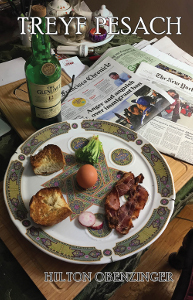
In Memoriam:
Thomas E. Douglass, who wrote
on Appalachian literature and writers, andHalvard Johnson, poet and co-founder
of Hamilton Stone Editions and The Hamilton Stone Review
In This Issue of Books for Readers:
(Reviews by MSW unless otherwise noted)
Thrust by Ken Champion
Joe by Larry Brown
Medusa's Country by Larissa Shmailo
Treyf Pesach by Hilton Obenzinger
Answering Fire by John Wheatcroft
I Married a Communist by Philip Roth
The Tipping Point by Malcom Gladwell
Gone Girl by Gillian Flynn
Carole Rosenthal s on George Saunders
Phyllis Moore on Lee Maynard's last book
Young Adult Appalachian literature list from Phyllis Wilson Moore
Things to Read & Hear Online
New and Upcoming Books
Announcements and News
Irene Weinberger Books
There has recently been, as most readers know, a generally shuttering of print newspapers, particularly their book reviewing departments. Not replacing them, but cropping up like a vast field of mushrooms (some amazingly delicious and some likely to cause nausea) have been the short evaluations you find on Amazon.com and Goodreads as well as many other places. One of my reasons for writing this newsletter has been to share my own reading, in my own way, and to make a space for those of you who might want to share reviews here-- Please contribute!
Meanwhile, for myself, I continue to reread books by favorite authors. Sometimes I get lists from group reviews in places like The New York Review of Books or online aggregators like Literary Hub. I also get a lot of books to blurb, review, or evaluate for university presses; but maybe most of all I get ideas word-of-mouth from my friends and students. Some of my friends also blog. Shelley Ettinger's Read Write Red features her excellent taste in literature as well as her strong left-wing world view, and NancyKay Shapiro's Books Make a Life is a new blog, and one of the sources she recommends is Backlisted Podcast.
The book I want to talk about first here comes directly from a face-to-face conversation with Alice Robinson-Gilman, a serious and constant reader. She recommended a book called Joe by Larry Brown of Oxford, Mississippi (yes, that Oxford, MS). It is a book that she says she keeps re-reading, and that in itself made me very curious. The genre is
Southern Gothic, which usually involves a lot of drinking and violence and eccentric, often down-and-out characters. An article in Publisher's Weekly a couple of years back lists what it considers the quintessential examples of Southern Gothic, and they include Child of God by Cormac McCarthy (when he was Southern not Western), Twilight by William Gay, and Faulkner's Sanctuary. Larry Brown shows up in the article, but not as one of the top ten. The genre isn't my favorite, as it has always seemed a little exploitative to me: Southern Gothic writers have a tendency to go slumming and play at poverty. I'm sure they have suffered in their lives as we all have, but they have also had for at least a while, access to a room of their own and a publisher. So I was skeptical when I started Joe, but I ended up liking it a lot. Brown's book has plenty of the requisite violence and grotesquery, but it feels earned.
The novel is mostly a study of the eponymous character Joe, although large sections follow the life of an illiterate boy named Gary from an astonishingly dysfunctional family headed by a Faulknerian Old Man named Wade Snopes-- sorry, I mean Wade Jones. About the only enormity Wade doesn't perform on his children is to have sex with them, at least not on stage in this book. But that's probably because by this time in his life he appears to have drunk himself into impotence.
Meanwhile, Joe lives a far more affluent life than the Wades. He runs a crew of tree poisoners for a lumber corporation, which then hires him to plant pine trees to replace the dead trees. He has a house, buys a fancy truck in the course of the novel, has an ample supply of whiskey and a cooler in the truck full of beer. He also has a divorced wife, children, and a grandchild. People like him, women of course, but also a local store keeper and the sheriff.
On the other hand, he is clearly on a downhill roll. He repeatedly gets in trouble with the local cops and engages in a blood feud with another local good old boy. Through the novel, Joe's deterioration gains momentum, and the events increase in violence-- Old Man Wade as well as Joe is revealed as more and more evil. There is a general blow up at the end, with a kind of self-sacrifice from Joe. This all feels believably inevitable. The hard-working but preternaturally ignorant young Gary does does appear to have a little luck, though, because Wade, though he unfortunately lives, leaves Gary. Interestingly, Brown chooses to write an epilogue about the natural world. It feels like the right way to end this-- the closest, maybe, that Brown can come to a happy ending.
More Books
Thrust , Ken Champion's latest novel, follows three men, two of whom are largely loners, with many similarities of style, but completely different world views, particularly in politics and architecture. Piero is a renowned and increasingly wealthy international architect of post modern sensibilities and a conviction that his art takes precedence over everything else. Liam dabbles in various kinds of work but is mostly a sort of modern day flâneur– a stroller, a café denizen, a walker in the city-- London, in his case. He, like Piero, is highly sensitive to buildings and light and skylines, and part of the pleasure of this novel is the observations of both men.
The third man, Jim, has fewer point-of-view
sections and is a skilled bricklayer who has a relationship with the bricks he works with that is analogous to the architectural sensibilities of the other two. Jim, though, has a wife and at least one deep friendship, and is a touchstone for the novel. Champion's work always finds groundedness in people who work with their hands. Jim's work is part of what allows him a real friendship and a wife.
The other two have difficulty sustaining long relationships, although Piero has an engineering colleague who follows him around the world and Liam, slowly over the course of the novel, has a growing relationship with Mary. I think Liam's real love, though, is London, which he takes into his pores as he walks and observes, loving the evidence of the past as well as London's polyglot present.
The three stories make their way in parallel narratives that one trusts will eventually braid together, and the expectation is nicely fulfilled. Jim's Polish co-worker dies in a work accident that is partly related to post-modern architecture, if not directly to one of Piero's buildings. Piero comes finally to London where he is unexpectedly jolted out of his life of jet-setting and art by bad deeds from the past. Liam grows most: both in his developing love relationship and also in taking on some political activism in speaking out against the razing of old churches and other structures. Finally, Liam and Piero meet face to face and have a long dialogue about building and society. Characteristically of Champion, the plot climax– while certainly exciting– takes second place to the conflict about building and razing and the question of what is progress.
It is a solid novel, determined to take its proper time using its own proper materials. The writing draws you in and the threads have an inevitable satisfying tying up into a final knot that stays in your memory and imagination.
Medusa's Country is more stunning poems from Larissa Shmailo. She is endlessly surprising, riffing off other literature-- an erasure poem using lines from "The Lotus Eaters" section in Joyce's Ulysses; one called "My Vronsky" with
reference to Nabokov's failure to understand Anna Karenina-- but also about a relationship destructive to the narrator. There is with short lines and hard-hitting rhymes like Sylvia Plath's famous "Daddy." Shmailo's Daddy, however seems to have hidden his love in strange places:
I looked for it in boxers;
In the dumps of ten detoxes;
In the roll of rundown rockers;
In anal & banal boys.
There is, of course, a lot more here, as in her previous books, we have passages of her personal story of living on the edge and in the lower depths as in the "The Trick Wants to Go to Plato's," the old Plato's Retreat sex club where single men aren't allowed. The narrator, who is indeed in the sex business, says " I sign a document attesting that I am not a prostitute; my whore name is Nora."
These poems alternate with ones using myth and rhyming patterns and parody (See "Fragment from the Ilatease of Homey, from a Recently Discovered Mycenaean Test." The final poem of the book, the title poem, about Medusa, ends
But once a man stood like a statue
Before my cave of trees
His eyes transfixed by my serpents
That hardened, froze, and pleased.
You will never be bored by Larissa Shmailo's poetry. I don't suppose that sounds like much of a recommendation to read it, but what I want to say is that her inventiveness and wit are only matched by her searing life experiences and her observation of death.
She surprises over and over.
I thought I was going to have the curmudgeonly pleasure of saying negative things about the highly popular Gone Girl by Gillian Flynn, and this one, to my taste,
started badly, but improved a lot. Gone Girl was a big hit when it came out in 2012. It is Flynn's third novel. Only three, too. She's been busy having a life as a journalist for Entertainment Weekly, getting married, having kids, etc.
Anyhow, I started out not believing in Nick as a man, really disliking Amy in her "diary" entries. It's efficiently written, and somewhere towards the middle when it is finally revealed that Amy is a psycho manipulator, I began to get really engaged. I went another third of the book interested in how Flynn was going to play this--interested in the plot but totally not caring about the people. I had seen at least part of the movie version and vaguely remembered some of the redneck resort part.
In the final section when Amy's voice began to come on strong, and I finally believed in Nick at least, and started to realize that is is probably a dark comedy. There are no real stakes--the main characters, who I didn't care about anyhow, were going to live (one minor character is murdered, but it's someone you feel like killing yourself).
It is a comedy in the technical sense too-- a wedding at the end, in this case the rejoining of the already-married young couple. I was pleased by Flynn's cleverness, and I think I get the book's success, but doubt I'd read anything else by Flynn.
The Tipping Point by Malcolm Gladwell started as a long essay or monograph, a staff article of The New Yorker. Like many nonfiction pieces that began in this form and then became a book, it has a ton of brilliant stuff early on that makes me want to think and discuss and read more– and then peters out and repeat itself and uses weaker examples in the effort to grow book-sized.
Nor does everything ring true to me--for example Gladwell's conviction that the Broken Windows theory of crime control was the real–and he appears to argue only-- reason crime dropped in NYC. He always writes well, of course, all enthusiasm and flashes of insight, but the book doesn't have the texture that the best nonfiction does (I'm thinking of The Murder of Helen Jewett about the death of a prostitute in nineteenth century New York). Gladwell himself says of his work, "You're of necessity simplifying....If you're in the business of translating ideas in the academic realm to a general audience, you have to simplify … If my books appear to a reader to be oversimplified, then you shouldn't read them: you're not the audience!"
Read more in the Guardian.
Hilton Obenzinger's new book of poetry, Treyf Pesach, has been praised by Paul Auster, Michael Lally, and Diane di Prima among others. It is mostly occasional pieces-- poems for a revised Haggadah, secular prayers, and psalms for the months since Mr. Trump became president. Obenzinger does his prophesying in long lines that are alternately outraged and humorous as he comments on politics and human follies over the last ten or fifteen years. Some of the poems are as up to date as "Dear Mr.. Donald Trump," one of 12 Psalms that end the book and says, "Due to a world that you cannot make into your own image/Due to shoddy real estate deals in the guts of refugees/We have to let you go/You're fired."
He typically uses everyday language in the classic American style of the New York poets and William Carlos Williams and, of course, the progenitor himself, Walt Whitman. Some of the poems have an incantatory quality and are meant to be read aloud, and indeed many have been performed. One of my favorites is a poem that was performed with a jazz ensemble that is called "Peace Comes to the World" and is full of delightful, zany imagined changes:
Politics becomes a way to meet new people and make sense
of the world, a kind of dating service and Department of
Public Works rolled into one.The suicide bomber walks into the marketplace, yanks the
string. Candies shoot our in all directions. He's become a
suicide piñata, except he forgets to die in the explosion of
sweets.Excerpts, of course, don't do justice to this kind of poetry that creates its efffects through long sentence-lines and heaps of images. A wonderful shorter poem called "Remembering/2011" is about how easy it is to be confused by how much you wanted something to happen in history: "Didn't Al Gore refer to that speech in his own inaugural ten/ years ago? I can't quite recall." And a sweet, very long 2014 poem called "Goodbye Books" is a valediction and farewell to a long list of favorite books: "The books line up and I shake the hand of each and every /one of them."
Charming and political, ranting and rough-edged, it's a book to read to yourself, or read aloud to others, or to use as a substitute for the religious texts you have rejected.
But feel free to laugh.
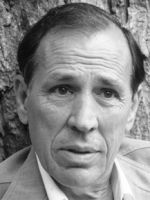
Answering Fire by John Wheat croft is a small book consisting of a short story and a novella, centering on the World War II experiences of a young sailor. The short story "Kamikaze," is wonderfully dark: we experience with the teen-aged protagonist some of the daily life of a big air craft carrier that is under constant threat from the Japanese suicide planes. The tension and horror of that are bad enough, but there is a possibly hallucinatory story line about another sailor, repeated described as silent, animal-like, and unintelligent, who hates their noncommissioned officer and gradually draws the protagonist into a mutual crime that is a deep look at the secret dark side of the human soul. It's an intense little piece, and a perfect mood-setter for the longer story.
"Answering Fire" is about an aging, highly civilized and thoughtful protagonist, who may be the young man from the first story fifty years later, on holiday in England with his wife. He is thrown back in memory by an encounter with another vacationer, a teacher from Japan. He begins to remember his experiences when the American naval forces, who had been told like the rest of America, that the atomic bombs dropped on Hiroshima and Nagasaki had saved the U.S. forces from a devastating resistance if they invaded Japan. Instead, the sailors, even far away from the nuclear devastation, find flattened cities and people living in holes, trading any saved valuables for cigarettes. This is an unusual and excellent book about what even that so-called righteous war did to combatants and victors as well as to victims.
I Married a Communist by Philip Roth is usually described as a roman à clef about Roth's marriage to Claire Bloom, but I pretty much missed all of that, and just read it as a Roth novel. I love many of the characters, especially the ones Roth loves (one of whom is not Nathan Zuckerman the protagonist). It's hard not to feel for the spectacularly flawed "Iron Zinn," and even more the older brother, Nathan's teacher, who as a ninety year old narrates most of the story. The background is wonderfully detailed, especially the romance of communism for a brainy Jewish kid growing up in Newark, NJ at the end of the thirties and during WWII. We get a lot of the black list and McCarthyism of course, and it goes on too long in places. I like how Roth gets excited about various crafts (glove making in American Pastoral, taxidermy and rock collecting here), but he probably uses more of his research than the novel requires.
I don't know if this is prime Roth, but second rate Roth is better than nine tenths of the books you read. Read and enjoy, Iron Inn and Murray the Teach and even tremulously manly Nathan Z., as they try to figure out America..
Still More Books!
Carole Rosenthal read George Saunders' Lincoln in the Bardo and liked it a lot. She says, "Saunders is very appealing to me, straight-eyed but deeply humane and often both moving and hilarious. One of the few white male biggies to depict working-class in a sympathetic way--although he can be and is viciously satirical. The collage he creates in Lincoln in the Bardo is very effective and an interesting way of seeing the USA--not completely dissimilar from Dos Passos many years before, but much more strange. Ghosts, or spirits anyway."
Phyllis Moore says that Lee Maynard's final novel, A Triumph of the Spirit, "proved to be another emotional high octane ride....the Jesse or Jesse-type guy gets pretty down and dirty in this new book. There are daring deeds: fights to near death, lots of women with beautiful body parts, wrecked motorcylces. It will repulse the spinsters and shock the mild-mannered. Queen Victoria would read it in secret. Just Maynard being Maynard If you are a Maynard fan, you will recognize pieces from his other books. They fit. He found a fitting way to wrap up his adventures and bid us goodbye."
READ AND LISTEN ONLINE
Joan Newburger's story "A Bad Day in the Promised Land," published in the spring 2017 issue of PersimmonTree, has been selected for a "2017 Write Well Award." The Write Well Award Anthology has just been published. The purpose of the anthology is to "recognize authors of some of the best stories on the web" and to raise funds for Silver Pen, Inc. a non-profit organization that helps writers by offering online courses, etc.
The Kirkus Fall Preview 2017 is online here with lots of good reviews, but especially look for one on Khary White's first novel, Passage.
Paris Review on John Gardener on the 35th anniversary of his death.
Excellent short short story by Beejay Silcox
Look for columns by Dolly Withrow in The State Journal on everything from Capitalism to Cats!
I'm still encouraging readers who don't know her to try a couple of online short stories by the late, great Grace Paley: "Wants" "Goodbye and Good Luck" "Mother"
Also, don't forget John Birch's blog reprinting pieces from his long career as a journalist and feature writer.
Teachers & Writers online magazine continues to publish wonderful, practical articles about teaching the arts to children, but often as in this one exploring the political with middle grade students, the audience should be as wide as possible. Take a look!
Tips for writing good fantasy.
How much should you pay (or charge?) for various types of editing services? Here's a list of typical ranges.
A lovely piece about a mother a son, and religion from The New York Times's "Modern Love."
A father's care for his troubled son: Ingrid Blaufarb Hughes' blog "Not the Whole Person"
And for something completely different-- a short story by the excellent science fiction writer N.K. Jemison. It plays nicely with time by dividing into out-of-order "chapters," and gives the old style satisfaction of a surprise ending: "Henosis."
Check out this article about what novels can do--and maybe can't anymore.
An excellent obituary of Lee Maynard.
The fall 2017 issue of the Innisfree Poetry Journal, is now available with a look a the work Pattiann Rogers.
Ginsko 19 is now online.
ANNOUNCEMENTS, UPCOMING BOOKS, GOOD NEWS, AND MORE.
Don't forget Blair Mountain Press--they do what Amazon.com can't, including providing signed copies, inscriptions upon request, a means of supporting your local post office, etc. etc. Their catalog will be sent on request, and their website is www.blairmtp.net.
Chany G. Rosengarten's new novel now available! "...a tale of Yerushalayim of the recent past, when families struggled to put bread on the table and children grew up before their parents’ plans for the future had a chance to unfold. In a story spanning decades and continents, a family struggles with the trials of facing the unknown and conquering their fears, as they hold on fervently to the promise of Jerusalem."
Jeff Biggers forthcoming book, The Trials of a Scold: The Incredible True Story of Writer Anne Royall. Years in the making, Trials chronicles the wild life and times of America's first female muckraker, Anne Royall, who was convicted as a "common scold" in 1829 in one of the most bizarre trials in Washington, DC. In praise of the book, Dorothy Allison calls Royall "a role model for those of us living in the age of Trump." For more info, check out the starred review in Publisher's Weekly.
One free entry to TCK Publishing's Readers' Choice awards for self-published/indie books.
More good news about Yorker Keith's The Other La Bohème: The novel about four opera singers is featured in the August 15, 2017, issue of Kirkus Review Magazine in an article called "Chasing Musical Dreams" that highlights three books whose theme is music (page 224 of the issue)
Joseph Harms has a new collection called _Bel_ coming from Expat Press .
YA BOOKS BY APPALACHIAN WRITERS!
Phyllis Moore has created a rich list of YA novels with Appalachian themes and/or Appalachian writers. She (and we) welcome suggestions and additions-- please e-mail your ideas..
From Irene Weinberger Books:
More from IRENE WEINBERGER BOOKS:
NEW AND UPCOMING BOOKS
By Jane Lazarre, Lori Brown Mirabal and an anthology from Mountain State Press:
Meredith Sue Willis's
Books for Readers # 194
December 11, 2017
When possible, read this newsletter online in its permanent location.
Back Issues MSW Home About Meredith Sue Willis Contact
.
Meredith Sue Willis's Books for Readers # 194
In Memoriam:
Thomas E. Douglass, who wrote
on Appalachian literature and writers, andHalvard Johnson, poet and cofounder
of Hamilton Stone Editions and The Hamilton Stone Review
In This Issue of Books for Readers:
Special Request: Can anyone read Chinese?
Reviews
(By MSW unless otherwise noted)The Book of Norman by Allan Appel
Don't Mind Me I Just Died
The Communist and the Communist's Daughter: A Memoir by Jane Lazarre
New Children's Picture Books from Belinda Anderson
Short Takes on:
Rosemary: the Hidden Kennedy Daughter
Biography of Hannah Arendt
Phyllis Moore on Lee Maynard's last novel
World War I and the Visual Arts
Shelley Ettinger on Rivers Solomon's An Unkindness of Ghosts
Fay by Larry BrownNew Anthology from Mountain State Press
Links for Writers
Correction from Issue #193
Notes on Madison Smartt Bell and Nathan Bedford Forrest
by Phyllis Moore and Gerald SwickThings to Read & Hear Online
Announcements and News
Irene Weinberger Books
It's holiday season, and I'm asking everyone to think about giving books as gifts--
books from independent bookstores (see clickable logo right for a store near you) and small presses. If you are looking for books for young children, don't miss Belinda Anderson's list of good new children's picture books in this issue.
Some of my favorite small presses that have published my work at some point, in anthologies or in book form, include Montemayor Press, West Virginia University Press, Ohio University Press, Bottom Dog Press, and the small nonprofit Mountain State Press which has a brand new anthology out, Voices on Unity: Coming Together, Falling Apart.
There are tons of excellent small presses, and they are publishing some of the most interesting work by contemporary writers. One place to get an idea of the variety is at Newpages.com where you can survey the riches to your heart's content. Two presses I am involved with on the editorial side are Hamilton Stone Editions and Irene Weinberger Books. Surprise your gift recipients!
Here are some new anthologies from small presses:
A few reviews of recent small press/university press books:
The Book of Norman by Allan Appel
I love the concept of this book: an inveterate gambler dies and his two sons, one a rabbinical seminary drop-out, the other a near-convert to Mormonism, battle for his soul. It's a comedy, but a comedy with lots of Biblical and other research behind it. For example, you meet various types of Jewish angels and learn about the colorful cosmology and afterlife of Mormonism.
The narrator is young Norman Gould, and the time is 1967, with a background of the Vietnam War and anti-war protests and the Watts riots. Norman is aware of these things, but more engrossed in his homecoming to
Los Angeles where he gorges on enormous amounts of treyf foods while working as a counsellor in a Jewish day camp,alongside his brother who wants him, Norman, to break it to their mother that he is about to become a Mormon. Norman, of course, is hiding from his family that he has dropped out of seminary.
The struggle between the brothers is painful and funny, and Norman is desperate for meaning, constantly berating himself for a lifetime of achievement within the framework of Jewish religious training that he now feels was a fraud.
The family includes the deceased father who died with cards in his hand, and their mother who kept the family together by working double shifts as a waitress in a Jewish pastrami palace. There is a grandmother, too, the father's mother, who lives with them and is lovingly cared for in her old age, speaking almost only Yiddish except for some baseball terms she uses to interact with her grandsons. You end the novel with a lot of affection for all these people--including the mother's new boyfriend, the despised temple fund-raiser the boys call "the Foot." Everyone in this novel– unusual in modern American fiction– is morally a little better at the end than they are at the beginning. Norman says Kaddish for his father three times a day, deep and heartfelt, and stops gaining weight on pork chops and cheeseburgers.
The book too, maybe even more unusually in contemporary novels, ends even better than it began. The first two thirds are probably too hard on Norman, who is, after all, young and confused and high on his newly-abstaining brother's stash of wine-soaked joints. The ending isn't about returning to old beliefs (Norman's brother really does leave Judaism and goes on to become a Mormon in good standing and start a nice Mormon family). It's more about learning to love your brother in spite of his meshuga religion– and loving your mother who marries someone you never liked.
Meanwhile, the gorgeous Israeli maybe-angels do some magic before heading off to their next assignment, either fighting in the desert or saving more Jewish souls. More importantly to me, though, is that while their prowess may be truly angelic or may only be Norman's dope-dreamy exaggerations, it isn't really necessary to the beginning of wisdom and the acceptance of the mysteries of our universe.
Don't Mind Me, I Just Died by Caroline Sutton
The heart of this book of essays is several pieces about the author's mother dying, but surrounding them are many other wonderful stories at once revealing and reticent, quiet but with plenty of color and event. They tell of the suicide of a young
friend's boyfriend; seventies road trips; tennis; and the lives and deaths of beloved dogs. Sutton's father relates his harrowing war stories with an objectivity that creates as much amazement as the experiences themselves.
One of my favorites is called "Left Unhung," which is a wonderful tour of nineteenth and twentieth century paintings in a museum, one after another, with their meanings explored, what they meant to the narrator as a child, what they mean to her now. Has anyone ever been this honest about the experience of being in a museum? We're usually too busy trying to view the art in the correct way, or to sound smart, even to ourselves.
Sutton's mother is mentioned in various contexts, and bit by bit we begin to circle around a rich portrait of her living as well as her dying (which she does as so many of us do and will, in a nursing home). In a typical indirect but moving association, Sutton gives an echo of the mother in the little dog Pokie who appears first just as a part of the mother's life, then gets his own story at the end.
It is an organically organized and deeply intelligent collection that brings you close to a world of love and delight--and quiet suffering. Things are sometimes told obliquely, but always with inspiring grace and intensity.
Jane Lazarre's The Communist and the Communist's Daughter: A Memoir
Born in Kishinev, famous for pogroms at the beginning of the twentieth century, Jane Lazarre's father Bill and his immediate family emigrated to the United States when he was a teenager. He learned English with great speed, worked, joined the Communist Party, did a stint in prison, and always read widely, but especially Marx, Lenin, Dostoevsky, Theodore Dreiser and other masterful critics of the status quo.
In fact, Bill Lazarre's reading list, and what he and his daughters read together and discussed, is one of the threads that binds the book together. For this is a memoir about people who constantly think and discuss, and feel as passionately as they think.
As a young man, Bill went to Spain with the International Brigades to fight fascism, and this remained one of the high points of his life. His life in the Party back in the United States was also rich: he wrote and spoke publicly and taught, but the heroic days were gradually undermined by intra-party struggles as well as rumors that justice was not being meted out in the Soviet Union. He was eventually thrown out of the party for reasons associated with the last days of Stalin when any disagreement was tantamount to betrayal. The ideology he had built his life around for its clear path to a better world no longer seemed to work.
After losing his Party positions, he had trouble finding work that would support him and his two daughters. Harassed by the FBI and eventually taken before the HUAC committee, he stood firm and revealed nothing to implicate his old comrades, in spite of a real danger of deportation, even though he was an American citizen.
In his final years, he found some satisfaction in a quiet life, a worker hired by former comrades, reading all the papers, finding a second love. He also had a little time with his first grand-child, Jane's oldest son whose heritage is half Eastern European Jewish radicalism and half southern African-American. This becomes part of Bill Lazarre's hope for the future--for a time when international union will be the human race.
The author, meanwhile, as she grew up--and this is almost as much her story as his--turned to psychoanalysis and literature as a language for finding meaning in the complexities of life.
Telling these things about this book, of course, give no hint of its texture: it attempts and largely succeeds in creating a nuanced view of Bill Lazarre's emotional and political experience and the world he lived and suffered in, which was also the world the author grew up in. He has his heroic days recruiting workers for the righteous cause, and he has personal catastrophes when both his adored wife and then a second love die of virulent breast cancer. The author creates his life using his letters and notes, stories told and books written by his old comrades, and she also imagines scenes of him as a boy in Kishinev and alone in his apartment at the end of his life.
She also writes about what it was like to be a Communist Child, when the families gathered in living rooms over food and discussion, with the children loved by all the adults-- a hint, perhaps of the yearned for Utopia of equality and camaraderie.
The book is organized in generally chronological sections, but within those sections, it works by association, by retelling dreams, by including transcripts of and commentary on court proceedings. It is a collection of materials, insights, incidents, and imagery formed into a brilliant whole by Jane Lazarre's skill and patience.
It ought to be a classic of twentieth century American life.
Belinda Anderson Recommends Picture Books for Children.
Picture books make wonderful presents. The ingredient all of my picks have in common is that they’re fun – lessons and insights are bonuses. The following books were all new additions this year at my local library:
When a picture book begins with images of a sheep bathing in a tub, then blow-drying her wool, you know you’re dealing with an image-conscious ewe. But you also know what happens when shearing season arrives. “Now you’ll feel nice and cool,” says the herd’s sheep dog, who also doubles as the flock’s barber. Lola is very unhappy with the results – at first. But she learns that change can bring something new and good in The Sheep Who Hatched an Egg, engagingly written and illustrated by Gemma Merino.
The Bake Shop Ghost is a fun romp with a bit of mystery. It was written by Jacqueline K. Ogburn and ghostily illustrated in swirling colors by Marjorie Priceman. Both author and artist are avowed cake eaters.
The 20th Century Children’s Book Treasury is just that – more than 300 pages from 44 classic picture books and stories, selected by Janet Schulman. The selections include Madeline, The Snowy Day, Make Way for Ducklings, The Cat Club, Amelia Bedelia, The Story of Ferdinand and Miss Nelson is Missing! The stories are accompanied by reproductions of the original illustrations.
The young narrator of the picture book Still Stuck, by Shinsuke Yoshitake, is having one of those days. He decides he can take his shirt off by himself. He gets stuck and starts imagining what would happen if he was stuck forever. He thinks about asking his mom for help, then decides maybe it would be a good idea to try taking his pants off first. How many of us have thought, bad idea, five seconds after doing something that makes bad go to worse? Fortunately, Mom intervenes.
Breaking News: Bear Alert, by David Biedrzycki, is a hilarious picture book romp with bears who have been awakened early from hibernation and head downtown.
Author Matt Lamothe has come up with a picture book showing kids around the world at school and home in This is How We Do It: One Day in the Lives of Seven Kids from around the World. The large-format picture book follows the lives of seven real families throughout the day. In Italy, their breakfast is toast with Nutella spread, a cup of egg yolks mixed with sugar and milk, and tea. In Peru, the family has fried rice with chicken and peppers, sliced boiled plantains, and hot milk.
I truly enjoyed these books myself and highly recommend them.
Briefly Noted & Books Received (notes by MSW if not otherwise noted)
Phyllis Moore says of Lee Maynard's final novel, "A Triumph of the Spirit arrived in my mail (thank you Amazon) and it proved to be another emotional high octane ride. If you are a Maynard fan, you will recognize pieces from his other books. They fit. He found a fitting way to wrap up his adventures and bid us goodbye."
Shelley Ettinger recommends Rivers Solomon's An Unkindness of Ghosts. She rated it 5 stars on Good Reads and added, "More like a 4.5 but I'm rounding up because there's so much to love about this novel. I liked it a lot, and there was a lot about it I loved. In my endless, endlessly frustrating search for truly fine literature that can be categorized as SF, it's cause for celebration when such a rarity arrives. Rivers Solomon is a writer to watch, that much is clear. Can't wait for their next book." (From Goodreads)
I read Rosemary: The Hidden Kennedy Daughter by Kate Clifford Larson as an ebook borrowed from the library. Rosemary, of course, was the Kennedy who was developmentally disabled. The lobotomy part was just awful, and the Kennedies were pretty awful themselves in a lot ways. Still, you can't read this and not understand the public fascination with them.
Rosemary, although always slow at reading and school, was also well-loved, carefully protected, and--judging from the photos--very attractive. She was even presented to the Queen of England, although family members conspired to keep her from being in conversations with strangers very long. In other words, she had a life, but was apparently as she got older sometimes angry and hard to handle.
So Papa Joe decided she needed her frontal lobe snipped, and she she ended up with physical disabilities and far less mental ability than she started with. Grim story.
Had she been the child of a poor family, would her story have had an even worse outcome? Or perhaps better?
Hannah Arendt: A life in Dark Times by Anne Heller was very satisfying to me. I've read a little Arendt, mostly essays in The New York Review of Books and lots of references to her, but I'd never known much about her--about her relationship with Martin Heidegger, about the brouhaha over Eichmann in Jerusalem, or about her in and out relationship with Israel and Zionism. Short book, very informative.
World War I and the Visual Arts by Jennifer Farrell is an issue of the Metropolitan Museum bulletin about art in Europe during the First World War. There are some propaganda posters (see the top of this newsletter), some examples of artists expressing patriotism from both sides--all just as the war began. Some of the artists actually went to war and were horrified, and many of them turned to anti-war art.
There are wonderful images by artists like Grosz, Beckmann, and Kollwitz, but also artists you don't usually associate with war imagery like Singer and Hartley and Marsden, even Bonnard.
I I admired Larry Brown's Joe a lot (see Issue # 193), but Fay seems wrong-headed to me in many ways. Some of it is excellent: Brown is a writer who can pretty much do exactly what he wants to do. He uses a flat affect and Raymond Carver declarative sentences that have a nice rhythm, and he knows a lot about certain parts of the worlds and certain kinds of places and people, and knows how to bring them to life.
The fault for me is two-fold: first, he tends to use killing people with guns as a substitute for plot development. There is a sort of elementary school trick of ending threads of story and characters with "And then they all died." Preferably by explosion,
The other fault is Fay herself, who is interesting in the early part when she is running away and a complete innocent with no ID (I kept worrying about that) barely able to read, not knowing how to use a pay phone or a dozen other things. In that part, her vast ignorance and vulnerability build incredible tension. She barely gets away from a crowd of nasties in a filthy trailer without being raped. So she's a survivor, and that works. Even when she does her first killing. I was reading eagerly to see what would happen.
But in the end, Fay becomes more the object than the subject of the story. When he did go inside Fay, Brown felt to me like he was slumming inside the little hillbilly Lolita. She becomes a temptress, and men end up dead.
The main focus turns to the the men around her. There's Sam, a good hearted fortyish cop who falls in love with her and tries to protect her, and there's the wildly off kilter and just-this-side-of sociopathic Aaron, who in his own twisted way also falls in love with her.
The final section is a drilling down, the three main characters coming together for an explosion, which Brown delivers, and I didn't really believe, although I couldn't stop reading till it was over.
I seem to be going through Anthony Trollope's Barchester novels again--it is, after all, Victorian novel season when the storm windows move into place, and the chill winds blow. This one is Barchester # 4: Framley Parsonage. Not my favorite of the series, but it improves as it goes along. It has, like Trollope's Phineas Finn novels, a lot too much elaborate playfulness about standing for parliament and parliamentary antics and the political parties, which he calls the Gods and the Giants.
The women are the best characters. Lucy Robards is small and "brown," but wins Lord Lufton's heart in spite of having no money. In many ways, even more interesting is Lord Lufton's mama, who is peremptory and conservative but also needs to be loved, and is able to change her mind.
I haven't mentioned the putative hero, Reverend Mark, who I don't like much. He is Lucy's big brother, and he gets caught up on a worldly path that ends him up in dire financial straits, He chooses to suffer passively, and is of course saved by his friends. Oh, and I like the feckless MP who borrows money from everyone he meets, and his sister, who loves only him. So maybe it's one of my favorite Barchester novels after all.
Eragon by Christopher Paolini is a popular dragon fantasy recommended to me long ago, and I finally took a read. It was written by the still-adolescent home-schooled Paolini, published by his parents, then picked up by a big press. It is lots of fun, bull of the energy and angst of youth. The hero Eragon is a somewhat inchoately angry and suffering teen-- well, he has some reasons: most of the people loves get killed or separated from him. Just the same he unnecessarily opposes people who want to help him. Lots of adventures and dragon and dwarf and elf-lore.
It was fun, but probably one in the series is enough for me.
Correction from Alice Robinson-Gilman
Alice Robinson-Gilman writes about my review of Larry Brown's Joe in Issue # 193 : "I think you mixed up something I said about my favorite books which I've read more than once. I liked Joe for giving me an insight (right or wrong) about the South but I've only read it once and don't intend to read it again. My few-more-than-once favorites are The Things They Carried by Tim O'Brien, The Lake in the Woods by Tim O'Brien, The Fifth Child by Doris Lessing, and The Dangerous Husband by Jane Shapiro."
Readers, what novels or other books do you re-read? For me it's the Victorians. -- MSW
FOR WRITERS
Actor Joseph Gordon-Levitt talks about a new project and collaborative writing.
Some Notes on Confederate Nathan Bedford Forrest and Madison Smartt Bell
Phyllis Wilson Moore wrote: "Years ago I read a Madison Smartt Bell novel, ALL SOULS" RISING and liked it enough to then listen to it. The reader was perfect. Like Lee Maynard, Bell shows what is happening and you get that "yowser" feeling. Last week the library had his novels THE DEVIL'S DREAM on the sale table. I needed a car audio. And so ................. It is a Civil War story featuring Confederate general Nathan Bedford Forrest. He was influential in the Klan's star -up and there is a statue of him in Nashville (My friend Gerald's current home town.) I've always disliked even the idea of him: slave owner, no Robert E. Lee. He was more like a cursing rough-cob edition of Stonewall Jackson with a slave mistress, too much adrenalin, and no fear.
"I'm not far into the audio but may have to go get the book as I want to"hear" faster than the audio. It is, so far, fascinating and even humorous, with some Lee Maynard women and style. If you have ever wondering why an upper class woman might marry a rough and ready guy, Bell shows why and uses only a few sentences. And they are rather humorous.
"Gerald Swick and I have discussed Nathan and his statue and so I am sending him this mail also. I may never get my car radio fixes as I am enjoying books on tape way too much."
Gerald Swick responded: "Last Friday evening I was in Columbia, TN, with a couple of friends and we passed a building just off the square that once was the finest hotel in town. I told them about the day one of Nathan Bedford Forrest's subordinates got into an argument with him in that building, pulled a pistol and shot him.
"'You SOB,' Forrest reportedly roared at him, 'you've killed me.' Whereupon Forrest pulled a knife and stabbed the guy, who fled the hotel, staggered to the square and collapsed in an alley.
"A doctor examined Forrest and assured him his wound was not going to be fatal. NB then felt bad about stabbing the other guy and had him brought back to the hotel and treated by the doctor, but the knife wound was mortal and the fellow died. Forrest grieved for his death, as the story goes. A strange and contradictory man was Nathan Bedford Forrest. I really need to read more about him."
READ AND LISTEN ONLINE
Suzanne McConnell's story "Neighbors" has been translated into Chinese! She says it was "published in a Chinese literary magazine Sept. '17, translated by Ping Xu, Professor of Modern Languages & Comparative Literature at Baruch College, who first read it on New Ohio Review's website. If anyone can read it, let me know!"
Ursula LeGuin on Who Cares about The Great American Novel?
Electric Literature has a funny if maybe misguided piece on the "Twenty Authors I Don't Have to Read Because I've Dated Men for 16 Years."
Five books suggested by The Atlanticto make you feel less stupid about the American Civil war:
1) Battle Cry Of Freedom by James McPherson
2) Grant by Ron Chernow.
3) Reading the Man: A Portrait of Robert E. Lee by Elizabeth Pryor.
4.) Out of the House of Bondage by Thavolia Glymph.
5.) The Life and Times of Frederick Douglass. The final of three autobiographies
A poem I like by Gary Jackson in the voice of a super hero that is really about parenting.
Check out Theresa Basile on how her family interacts with her autistic adult brother through The Simpsons.
Plots that an agent says she never wants to see again.
Ishiguro on his writing process-- some quotes and links
Joan Newburger's story "A Bad Day in the Promised Land," published in the spring 2017 issue of PersimmonTree, has been selected for a "2017 Write Well Award." The Write Well Award Anthology has just been published. The purpose of the anthology is to "recognize authors of some of the best stories on the web" and to raise funds for Silver Pen, Inc. a non-profit organization that helps writers by offering online courses, etc.
Recommended short short story by Beejay Silcox
Look for columns by Dolly Withrow in The State Journal on everything from Capitalism to Cats!
I'm still encouraging readers who don't know her to try a couple of online short stories by the late, great Grace Paley: "Wants" "Goodbye and Good Luck" "Mother"
Also, don't forget John Birch's blog reprinting pieces from his long career as a journalist and feature writer.
Teachers & Writers online magazine continues to
publish wonderful, practical articles about teaching the arts to children, but often as in this one exploring the political with middle grade students, the audience should be as wide as possible. Take a look!
Obituary of Lee Maynard.
ANNOUNCEMENTS, UPCOMING BOOKS, GOOD NEWS, AND MORE.
Voices on Unity: Coming Together, Falling Apart , an anthology, is just out from Mountain State Press. The book retails for $16.99. The official book launch is December 12, in Hurricane, West Virginia (publisher and editor Cat Pleska's hometown). Take a look at the book and at Mountain State Press!
Ian Woolen's new eco-fiction, MUIR WOODS OR BUST is published by Coffeetown Press in Seattle. Featuring the backstory on how John Muir became John Muir (the industrial accident in Indianapolis in 1867). And a new DSM diagnosis: Eco-Mood Disorder. Meg Little Reilly, former Obama staffer, and author of WE ARE UNPREPARED, says : "Prescient, wry, and wholly original, MUIR WOODS OR BUST is the novel we need right now."
Darren C. Demaree's new book of political prose poems, A Fire Without Light, has just been published by Nixes Mate Books.
See latest poems on Barbara Crooker's website.
Aerial Views--3 Sci-Fi Satires by Fred Russell: A provocative look at contemporary American society from a distance of 500,000 years. Appearing as Volume 23 of the Wapshott Press Storylandia series. Available at Amazon.
From Irene Weinberger Books:
Meredith Sue Willis's
Books for Readers # 195
February 13, 2018
When possible, read this newsletter online in its permanent location.
Back Issues MSW Home About Meredith Sue Willis Contact
.
Meredith Sue Willis's Books for Readers # 195
In Memoriam:
Halvard Johnson, poet and cofounder
of Hamilton Stone Editions and The Hamilton Stone ReviewThomas E. Douglass, who wrote
on Appalachian literature and writers
A Time to Stir: Columbia '68
Essays on the 50th anniversary of the
Student Rebellion at Columbia University
Truth in advertising: MSW has an essay in this!
See Below for more.
Coming Later This Year from WVU Press:
MSW's New Novel!"Tough-minded, compelling...a terrific read" -- Phillip Lopate
"Sweet, slyly humorous cadences of West Virginia" -- Diane Simmons
"A compelling series of mysteries" --Jane Lazarre
In This Issue of Books for Readers:
Articles and Announcements
Books on West Virginia History from Gerald Swick
Mountain State Press Celebrates Forty Years!
Barbara Rosenblatt on getting a Nonfiction MFA
A List of Must-Read Latino Literature
A List of Books about Appalachia from In These Times
Selected New Anthologies of Appalachian Literature
Hilton Obenzinger on A Time to Stir
News from Rachel King
Reviews and Short Takes
(All reviews and commentary by MSW unless otherwise noted)
Donna Meredith Reviews Voice on Unity
Ramp Hollow
The Climb from Salt Lick
Lincoln in the Bardo
Just Kids by Patti Smith
Shelley Ettinger on recent Joyce Carol Oates novel
N.K. Jemisin Trilogy
Victory by Joseph Conrad
Jennifer Egan's A Visit from the Goon Squad
The Handmaid's Tale by Margaret Atwood
The Last Chronicle of Barset
Walter Mosely Books
Online, Announcements, etc.
Things to Read & Hear Online
Announcements and News
Irene Weinberger Books
I'm delighted to open this long issue with a review by Donna Meredith of an anthology called Voices on Unity (in which I have a selection). The anthology was edited by writer/publisher Cat Pleska, and it comes from Mountain State Press, which is celebrating its fortieth birthday--See below! Other reviews include two more with a strong West Virginia connection or setting: Ramp Hollow (a scholarly answer to the much-ballyhoo'd Hillbilly Elegy) and The Climb from Salt Lick about a journalist come-here and her life in West Virginia. There are a lot of other recommended books, too: science fiction, Victorian novels, Conrad, Egan, Atwood, Patti Smith, and more!
Voices on Unity: Coming Together, Falling Apart Reviewed by Donna Meredith
E Pluribus Unum. A fine motto, but perhaps we Americans had forgotten how difficult it has always been to achieve that
goal. If we had a touch of amnesia, the 2016 election and its aftermath reminded us. It is division—and the ways people strive to overcome it—that the anthology Voices on Unity: Coming Together, Falling Apart explores.
The collection, edited by author and publisher Cat Pleska, showcases thirty-five accomplished writers. In the introduction, Pleska says her intention was to “help writers use their voices.” She quotes veteran writer Anne Lamott’s advice: “You get to tell it, because it will become medicine.” In this anthology, writers share their prescriptions for dealing with tumultuous times, although only a few examine this theme strictly in the current political context. Others explore family, gender identity, race, and marriage. These essays, stories, poems, and song land a powerful emotional punch, one that will touch the hearts and minds of readers everywhere.
Both Pleska’s introduction and the first essay use the 2017 Women’s March as a focal point. Pleska recounts her own personal activism when she connected with fellow students to briefly protest cancellation of a high school trip, and then her decades-later participation in the Women’s March. Her essay also reflects on moments when Americans have put aside political division to forge unity.
In the narrative nonfiction piece “I Hear You,” Kayla Queen alternates the Women’s March with a yoga retreat. In both events she is surrounded by strangers who come together with a purpose. At the march, Queen is struck by “how many people are being affected by the political climate, how many are suffering, how many are afraid for so many different reasons.” She witnesses “the human race using its voice to stand for something better.” At the yoga retreat, she discovers a similar connection “of being among other women who made [her] feel powerful.”
Marie Manilla’s “Fire Walker” offers a personal slant on women’s issues by describing how her marriage falls apart, but more importantly, how her own ideas of a woman’s place in the world evolve. Growing up, she absorbed a negative message pervasive in our culture: “Women were to stand stoically by and take piles of crap without being a nag. It was a badge of honor to bear up without whining.” Eventually she realizes her own hopes and ambitions matter too, and she wouldn’t achieve them or heal her own wounds by trying to rescue her “damaged ex.”
The short story “Mattresses,” by Christina St. Clair, also portrays a clash between genders. The female protagonist complains her minister husband keeps her awake all night but refuses to recognize her need for a larger bed. Even though she knows she’ll cause scandal, she considers divorce. The church people would “never understand how a pastor’s wife or any wife for that matter could want her own life.” She’s not asking for the moon—just a queen-size mattress and a good night’s sleep. The story is about so much more than a mattress. If this dominant male denies his wife’s most basic needs, the rest of her dreams are surely ignored as well.
In contrast, two pieces explore the uniting of a man and woman in mature and beautiful marriages. In “Gathered Together,” by M. Lynne Squires, the newly married couple elevates the concept of a unity candle to new heights. They request that guests from the bride’s side exit the church with someone from the groom’s side, and that they get to know the other person and seek similarities. The ritual, they hope, will connect their personal worlds—and more: “today a wedding; tomorrow a world.” The story suggests the importance of listening to those with different backgrounds, different world views.
Another wedding in the anthology describes unity between religions. In “Time for Singing,” by Magin Lasov Gregg, a Jewish woman and a Baptist minister fall in love, despite the woman’s initial concern that “Ministers are another species of men, something [she] should avoid and venerate.” During their courtship, she wants to know how they will “create a unified family while maintaining separate religious beliefs.” Carl’s response is sensitive and loving: “The best way for Christians to atone for centuries of Christian-inflicted violence against Jews is to bring more Jews into the world.” Clearly, they have no intention of changing each other, no “power struggles,” no push to convert.
One piece that stole my breath—I mean, really knocked me to my knees—is “Arrhythmia,” a prose poem by Joel Peckham. The anthology would be worth a place on any bookshelf for this piece alone. It begins with these arresting lines:
There is a shyness and a wish in the song of tires on the interstate after rain—a consoling shhh that settles like a hand on a shoulder or fingers gliding through a child’s hair or the soft roll of cymbals fading at the end of the last torch ballad an hour past last call when everything is settling toward silence still swelling and swollen with a promise it will come again. It will come again, I say, whispering.
The piece expands in eight associative fragments that gel into a powerful whole. The crux is a tragic moment the narrator can’t remember fully: “I do not know if my son screamed when the van struck the truck, when the glass shattered around him when he was, for an instant thrown to flight.” From this tragedy, the narrator searches for meaning in human suffering:
This is what listening means—finding in the storm, the harmony, the single tap of rain among the many rhythms, the molecule of hydrogen in silence beating like a heart among so many which is to find the unheard unuttered cry of one’s own child in the eyes of a girl staring from a broken city, in a woman’s unhinged wailing, in the body washed up on the beach a world away as the waves pound sand to sand drawn to and from the sea.
Suffering—and the recognition of it—unites humans. It creates empathy, the ability to reach out to others.
Another human suffers from terrible loss in the opening of Meredith Sue Willis’s novella, Saving Tyler Hake. The story fits the theme of unity since the narrator explains the entire community “saved him together.” Tyler’s father, we learn, committed suicide after returning from the Gulf War. When Tyler shows up at school wearing his father’s blood-stained, bullet-pierced shirt, we know the boy is in serious trouble, and of course we are hooked. We want to discover how a compassionate community reaches out to help him.
Eberly Barnes’s “Sermons I Never Wrote Because I Was a Girl” is a powerful piece examining the various ways lack of empathy can cause suffering. The female narrator encounters strong parental prejudice against her writing sermons like her minister father, but the essay travels far beyond suppression of childhood dreams. As an adult, she deplores roadside signs like “Jesus is Lord. We Process Deer,” and she imagines “men in white sheets” who “burned crosses in cheerleaders’ yards if they happened to speak nicely to the star (black) football player.” The narrator finds a measure of contentment by fleeing from her Louisiana home to a St. Louis bakery, PanDora’s, where people of all ethnicities and genders come together to make focaccia seasoned with sage. Her sermon espouses traditional healing:
When the air is filled with shotgun blasts to the face of one type or another; when those shadowy figures in white robes have infiltrated the highest offices of the land; when the world I thought I left behind has risen up and casts a large shadow: “Rub sage.”
The herb has long been used by indigenous people to ward off evil spirits and in purification rituals. The baking of good bread and the heady aroma released when rubbing sage offers the narrator comfort, therapy to counteract a world beset by evil.
Also dealing with the American racial divide, Kelly McWilliams' memoir “Ancestry: The Mixed-Race Third-Grade Blues,” is both funny and poignant. The narrator and her mother laugh as they invent a country of origin and a dance set to drum licks stolen from Sweet Honey in the Rock to satisfy a third-grade teacher’s well-intentioned assignment on family heritage. Yet the story is sad because family history has been erased for those whose ancestors were slaves:
Our roots aren’t found on the tips of our tongues, because those roots were severed, silenced, tree after gorgeous tree cut down. . . . We are each of us waves in an ocean of American blackness, a consciousness flowing through fragmentation, persecution, loss.
The assignment brings the mother and daughter together as they “skim joy from the old suffering.” They refuse to be beaten down by the dark past. They choose happiness instead.
A touch of humor also enlivens Randi Ward’s short but evocative poem “Ground”:
Why build
so much
fence
when you can’t
even keep grass
on a piece
of ground?
Every gardener knows the truth of this one. Bunnies, armadillos, and bamboo find ways to burrow under fences, and birds and drones fly over. Fences and tunnels breach the barriers too, as many immigrants have discovered.
The solutions offered for dealing with division are as varied as the writers themselves. Chris Arvidson suggests “Perhaps harmony is actually found / In the questioning itself.” Karen Salyer McElmurray studies words like love, rage, and kindness, hoping to find “some true power with which to resist.” Poet Chris Green suggests we ask our ancestors for guidance: “O, Grandfather, Grandmother, / Give us the wind’s name that bears / the scent of the summer’s first stars.” Mary Barbara Moore says “ ‘No’ to the mean- / minded, ‘Yes’ to the signs / of action, singing and signing.” Eberly Barnes offers this advice: “Remain calm and practice tai chi and yoga and meditation. Sing, pray, move, stand, sit, whole body, whole heart, whole being. Protest, march, write, share.” And a simple but effective prescription for getting along with others is expressed in Belinda Anderson’s mother’s final words: “Be kind to each other.”
Perhaps the most inspirational path to find peace is found in Larry Franklin’s essay “The Path”, a “path that, if followed, will give you a life with love, a life with God.” First, Franklin says, “build yourself a flower garden, preferably one big enough to walk through. Surround it with birdhouses, bird feeders, and a birdbath or two.” When nature’s creatures come to visit, you will feel “the love, the presence of God.” He also suggests adopting a dog because it will offer the gift of unconditional love. And finally he suggests developing “friendships with two, three, or more people who, like your flower garden, offer beauty in their different sizes, shapes and colors.”
The anthology’s authors offer us hope that, by listening to those with different views, we can become more empathetic, that we can reach across a chasm that threatens to split our nation in two once again. And even if we sense the ground shifting and shaking beneath our feet, we can still forge our own path to peace and happiness.
Ramp Hollow: The Ordeal of Appalachia by Steven Stoll
This nonfiction study of subsistence farming teaches us what poverty is and is not. Some cultures, says Stoll, have in the past and even now in a few far flung places, lived well with fewer material goods than twenty-first century Americans assume are their right. The grinding, miserable poverty we think we know today is largely an artifact of economic factors.
One of the best things about this book is that it does not set West Virginia and Appalachia in a special zoo of pathetic poor people, but rather gives us reasons and contexts. It describes the mountains of Appalachia as an example of enclosure (like England in the fifteenth century C.E.) and of forced participation in capitalism.
The first European settlers of Appalachia, after displacing the native Americans, of course, tended to use the land and the forests as a kind of "commons--" land that belongs to no one in particular but to everyone for their use.
Many of the subsistence farmers of Appalachia, for example, used to run their livestock in the woods for foraging, hunted there for game, and did a little logging for building or even to sell for some cash. They also kept gardens, using "swidden" or controlled burning to make space for fertile gardens.
Then the government began to give away great swathes of forest and land to usually wealthy people rather than to the smallholders who had been working the land. After a period of time, the owners began industrial logging that destroyed what had been a shared source of food and cash, and this was followed by exploitation of other resources, notably coal. Thus was a life of sufficiency gradually replaced with modern style grinding poverty.
Stoll believes that it was not only land grabs and exploitation of resources, but also the explicit demands of the capitalist system that led to this poverty. Capitalism, says Stoll, demands that everyone participate in the economy of money and wages. That is, surviving on a little farming, a little logging for cash, hunting, etc. doesn't earn wages and thus puts the people who live that way out of the system. Capitalism wants everyone working for wages, participating in the system.
Along with the central thesis are interesting bits on things like Arthurdale (Eleanor Roosevelt's planned community near Morgantown, WV for miners). There's also a section analyzing some landscape paintings by George McInnes that felt like padding-- even though I got a kick out of the connection to where I live now in northern New Jersey.
The details are grim and fascinating, but, again, the connection between Appalachia and the rest of the world makes this an especially important book. West Virginians and other Appalachians are not anomalous victims. The book ends with some of the same things happening even now in in Mali and other parts of Africa, and I recently read a related piece in the New York Review of Books (Issue of January 18, 2018) by Raja Shehadeh that makes the case that enclosure has been used against agrarian Palestinians.
In the end, Stoll puts the blame for poverty as well as environmental degradation squarely on our economic system, and suggests that large political changes are the only way truly to address poverty.
The Climb from Salt Lick by Nancy Abrams
Nancy Abrams' memoir is about choosing a new place, and it is always engaging, but it also attempts to capture some of the struggles of life in a northern West Virginia county. Abrams is a local journalist, and she writes both about her personal life and about events like school consolidation, in which people protest and try to stop changes that might well improve their children's educations. She manages to admire both those who want change and the local conservatives and their aspirations.
Her status as an outsider-- a Jew (or as she says, Jew-ISH) in a fundamentalist Christian milieu, gives her a special perspective. She's a suburban girl-photographer who gets a job in Preston County and hangs around the fringes of hippie-dom and the come-heres of the last decades of the twentieth century, but is most serious about chronicling the community. Then she marries a local boy, at least partly to get closer to West Virginia, she says. Their wedding includes her Jewish family as well as West Virginians, and it creates a wonderful moment of human high ground.
Life at their place takes a lot of physical labor. Her husband is loving, excellent with machines, great with their two little boys-- but never gets a long term job, and begins to drink more and more. She leaves him in stages, has an affair, starts working in Morgantown, the university town nearby, and finally moves there with the boys--who are amazed by central heating..
My favorite parts, however, are not her personal story, gripping as that is, but rather the parts that come out of her journalism, like the fifty year celebration of Arthudale and the great flood of November 1985. I love her stories about reporting on the Buckwheat festival and what happened to the little towns of Preston County-- Roweburg and Terra Alta and Masontown and Kingwood. The story of small town journalism in the nineteen seventies and eighties is alone worth the price of the book.
Abrams' life through the end of her marriage and starting to work at a bigger newspaper gives a structure to the book, but the heart of her story is her work-- and her love for this place she chose as a young woman.
SHORTER REVIEWS (notes by MSW if not otherwise noted)
Lincoln in the Bardo by George Saunders
This novel is very popular among literary folks. Michiko Kakatani liked it somewhat reluctantly, but Colson Whitehead raved.It has an unusual setting that might in other hands have been off-putting, but is actually touching and readable. Saunders' Lincoln, who isn't really the main character, is the point of connection between personal personal loss and the nation's loss of so many young men in the Civil War. The best characters, though, are the sometimes bumbling deceased who aren't quite ready to leave the graveyard for their final disposition. There is a minister who is the only one who seems to understand what is going on, and among the others a lot of amusing yet sad talk. It doesn't take long to get into the swing of how it's told. It's made up of snippets of real histories and memoirs and letters as well as made-up histories and memoirs and letters in the style of the real ones, and the denizens of the bardo tell us about their lives and life in dialogue and monologue.
Just Kids Patti Smith
Surprisingly novelistic and full of funny surprises. Smith's memoir may not be as deep as she thinks it is, but it's a pleasure to read. To my taste there's too much name-dropping--people from avant garde art and Andy Warhol's entourage (not to mention Janis Joplin's and Jimi Hendrix's and Bob Dylan and others), but her enthusiasm for the famous feels sincere, almost innocent.
Smith as a teen determines to live an artist's life, and when she gets to New York really does have trouble getting enough to eat, but seems above all thrilled to be surrounded by talented people. Even later, when she becomes a punk poet rock star in the 70's, she apparently never loses a kind of fan's humility ("OMG I'm talking to Jim Hendrix! He's being so nice to me!"). This feels genuine, as does the relationship with Robert Mapplethorpe, with whom she continued to be close long after their sexual relationship ended, sharing living spaces and art. He, at least according to her, turned her into the artist she wanted to be. She keeps her focus on the two of them, going easy on the rest of her bio. Patti Smith has written poetry, made drawings, written songs, performed poetry and rock and roll--and performed Bob Dylan's work at the Nobel Prize ceremony.
I was charmed by her exuberance.
Hilton Obenzinger tells us about A Time to Stir: Columbia '68
Hilton Obenzinger writes: "A collection of excellent essays/memoirs about the Columbia 1968 rebellion. [Editor Paul] Cronin has taken great care to incorporate the perspective of the Black students, members of the Student Afro-American Society, who occupied Hamilton Hall. Perhaps the biggest distortion at the time and since has been to make the Black students, who were pivotal, barely relevant in the face of the many more white students of SDS and others. All the perspectives are here: SDS, SAs, cops, administrators (those still alive), grad students, faculty, community members, although there could have been more women. I learned a lot (I have an essay in the book). Such a large event and so many facets. For example, I learned that the assistant DA wanted to drop all charges (trespassing, etc). He was sympathetic to the students but the fact was that they could not prosecute because none of the arresting cops actually could say they saw the student in the building. Most students were beaten, tossed to another cop who beat him or her more, then to another and another, until the arresting officer outside of the building. However, Frank Hogan, the DA who was also a member of the Board of Trustees of Columbia, insisted that they prosecute. In the end, that meant the proceedings dragged on until - all the charges were dropped. Good job, Paul Cronin."
Read a review by Jonah Raskin and here's Phillip Lopate's piece from the book.
Shelley Ettinger on A Book of American Martyrs by Joyce Carol Oates (from GoodReads)
Shelley Ettinger says, "This is [Oates'] best novel in years. The best since The Falls, I'd say. With her last several books I'd thought she was fading, that her powers were waning, but now wow she's back baby, with all the deep impact of her finest work. I don't love the end--the very end, I mean, like the last sentence-- because it feels like she succumbed to a certain unwonted sentimentality, but ok that's her call.
"Overall, really fine work of a grand scope."
N.K. Jemisin's trilogy, THE BROKEN EARTH: Fifth Season, The Obelisk Gate, and The Stone Sky.
I enjoyed the first book most, although I wouldn't have missed any of them. There are great details: in this world where there are explosions and earthquakes and worse at any moment, people keep backpacks they call "runny sacks" handy at all times. There are dangerous smiling Guardians in charge of channelling the power of the "orogenes," who are at once the movers and shakers (quite literally) and the hated alien-outcasts. There is a lot of exploration of what it means to be a mother that is excellent and thought-provoking, and the main character, Essun, in her various stages, is complex.
I was especially interested in the idea of "Comms," which are communities, which are essential for survival in this extraordinarily hostile environment. There is also one semi-human group known as stone eaters who are beautifully realized, at least until the end when probably too much is explained too fast.
I guess I got a little tired of the world building by the second and third novels, when Jemisin tries to tie up all the loose ends with one grand narration of history and pseudo geography and biology. Do we really need all the answers? But the complaint may be more about science fiction than about Jemisin.
I'll be looking for more by this Hugo-Award-winner and superior stylist.
A Visit from the Goon Squad by Jennifer Egan
Egan has said in an article from the Guardian that this novel was inspired by Proust's À la Recherche du Temps Perdu, and HBO's The Sopranos. I liked it, although the power point chapter (next to last) was hard to read on the kindle version, and the grand finale, while satisfying in some ways, wasn't really very good speculative fiction, IMHO, particularly the technology, which seems all sort of unimpressive– it's technology for people who essentially disdain technology, though they pride themselves on being able to use it.
Otherwise, it is a lot of fun to read, slipping from character to character, story to story, with the delight you feel when the connections come clear. The opening story with a kleptomaniac protagonist is wonderful, and that character's reappearances are all interesting. I'm just not sure why Egan decided to go the speculative fiction route,
Definitely worthwhile, though. See above for what the Guardian said, or take a look at The Washington Post's review.
The Handmaid's Tale Margaret Atwood
I read this many years ago, but I remember almost nothing but the claustrophobic feeling. While I was reading it this time, I scanned a few reviews of it (Mary McCarthy for one) and people seemed, when it first came out in 1985, to be judging it on its didactic qualities. I don't think that was such a big deal--it's really just dystopian fiction. It even has a possibly hopeful ending based on it being told by Offred. because we are ostensibly reading Offred's first person story, suggesting that she was able to look back and tell what happened to her. Also, there is an afterward called the "Proceedings" with a two century perspective on the events of the story. The Proceedings part was annoying for its sexual innuendos (an in-joke on how academic conferences will always be the same, a little slimy?).
Offred is set up as painfully ordinary woman, although in retrospect it's a person judging herself for her lack of heroism. Well told though, the gradual revelation of the setting (apparently Cambridge, MA) and of the details, the primary color rigidity at the beginning, then the opening up of more messy life underneath--a good read, although probably not her finest work.
Victory by Joseph Conrad
The story acts out the terrible stereotypes of colonialism, both in racism (an inscrutable but clever C
hinese; a sleazy dark-skinned Latino (unless he's Italian). But, as usual in Conrad, the European guys aren't so terrific either. And the women don't really count.
What's best about this isn't the people as characters, but as the locus for gathering doom, particularly around the main character, Heyst, a sort of spoiled soul who was raised by a philosophical father to have no hope and no belief. He is, in spite of this, naturally kind-- surprising himself as well as others.
The ostensible bad guys are delightfully over-the-top--a misogynistic aesthete and murderer named "Jones" is truly creepy, but maybe more interesting is the talkative sociopath Martin Ricardo, who always needs to attach himself to some leader he perceives as higher being (thus he follows Jones who he believes to be a gentleman)..
I've read several of Conrad's books lately, and they have a quality that holds me. I just wish he were more self-aware of his terrible racism–claiming general misanthropy isn't good enough.
The Last Chronicle of Barset Anthony Trollope
One more time through the Chronicles of Barsetshire. This one finishes up a few loose ends from the previous books: Lovely Lily Dale, jilted cruelly, refuses to entertain her faithful lover's offers. While she puts forth a charming surface, she strikes
me as living on and for her pride. I kept wondering what she will do for the next fifty years, no profession, no real influence in her world. She'd be a good subject for a feminist spin off story like my little collection of Re-Visions.
There's too much of the ostensibly light material in London, but back in Barset, we have a touching send-off for Trollope's beloved Warden, Mr. Harding, and we get lots of time with Trollope's favorite characters, especially scenes with the bluff squire-like Archdeacon Grantly and his intelligent wife.
The real high point of this novel, though, is the story of Josiah Crawley, the ambitious, touchy, stiff necked Greek scholar who is accused of theft. His legal and moral quandaries and the fate of his family make up the central story line. The way Crawley refuses to defend himself nearly ruins his family. He walks twenty miles to see the Bishop and then twenty miles home rather than accept a ride from a friend, and he blathers on about women submitting to their husbands--but teaches his daughters Greek. He suffers obstinately and spectacularly, but his near-insane wounded vanity is at least partly outweighed by his kindness to and respect for the poor brick workers in his parish.
I'm already missing the clerics jockeying for political gain and the ladies pretending piety and submission while they really run things, or try to. How long before it isn't unseemly to start over again?
(Image above is of Salisbury Cathedral, supposed to be the model for Barchester Cathedral, by Constable)
Three Walter Mosely Books
Mosely is one of my go-to dependables for a fast read: not requiring a lot of effort. Like a sleuths and crime fighters, Mosely's Easy Rawlins spends a lot of time suffering and regretting his failure with the women in his life, but the settings (Los Angeles forty and fifty years ago) are lots of fun, and Mosely's main characters are mostly African-American, which is refreshing. Easy sticks with the program, though by being after a lone wolf.
Black Betty
This one is maybe the one to read if you're only going to test out the Easy Rawlins books. In the background, Kennedy is being elected president, and It has the usual concerns and obsessions, and Easy is his usual self, trying to retain a relationship with his assassin friend Mouse while mostly being on the side of law-- but totally on the side of his extended, created family.
There's a nice flashback scene that works into the plot well– Easy actually knew Betty back in Texas,
when she was a hot and dangerous local figure and he was twelve years old and besotted with her. She turns out to be still dangerous for the people around her.
If a reader gets hooked, they'll go ahead and squeeze the pleasure out of the lesser novels, but this one has all the good qualities. When Mosley's good, he's so very good.
White Butterfly
Here we get a lot more of Easy's adopted children, including Jesus, who won't speak, and the little girl Feather. This is also the novel when Easy's wife takes his biological daughter and leaves him. There is a string of murdered women and a lot of corrupt police and other corrupt and powerful white men..
White Faith
I thought I was reading an early book here, but this one is actually Easy Rawlings #11, with lots of references to previous books and a lot of Easy's maudlin world view, so heavy and sometimes repetitive. His depression; the women who fall in his lap all the time. (Some of this is just detective genre cliché). He only partly represses the violent part of himself, and in this book there are others who express the violence for me: Mouse, of course (such a great character: Easy's best friend, the stone cold murderer with no conscience), and the soldier guy with the adopted Vietnamese daughter.
Books about Appalachia Recommended by In These Times:
What You're Getting Wrong About Appalachia by Elizabeth Catte (2018)
Ramp Hollow by Steven Stoll (2017) (see above)
The Shawnees and the War for America by Colin G. Calloway (2008)
Folk Songs from the West Virginia Hills by Patric W. Gainer (2017 reprint of 1975 book)
Gerald Swick talks about his new series of West Virginia history books
It's been a long time since I sent anything to the list of people who used to receive my "Once, Long Ago" column by email. During my 16+ years of writing that column a number of folks told me I should put the columns into a book.
Well, I've done more than that. With over 800 columns to choose from I decided to bring out a series of eight books, titled West Virginia Histories, organized into themes such as Civil War, West Virginia Women, Sports, the Arts, etc. A small company in Nashville, Grave Distractions Publications, is publishing the books.
The first two in the series—West Virginia Histories Vol. 1: Unique People, Unusual Events, and the Occasional Ghost and Vol. 2: Days of Slavery * Civil War and Aftermath * Statehood and Beyond—have been published and can be found on Amazon and Barnes & Noble. Bookstores can order through Ingram or Baker & Taylor.
Each book in the series will feature: 100 articles organized into themes, plus an "Other Stories I Want to Tell You" section for all the stuff that doesn't fit neatly into any of the themes. [There are also] never-before-published articles in each theme, written for this series Each book is extensively indexed; I plan to have a master index in the final one.
Each section opener has a photo related to West Virginia's past
To learn more, please visit my new website geralddswick(dot)com and click on WEST VIRGINIA HISTORIES in the sidebar.... On the site you'll also find my new blog, which applies my, ah, unique style to American history. The site isn't quite finished yet, so I'm holding off on having web engines index it, but you should be able to reach it directly through the URL above. Let me know if you encounter problems.
Barbara Rosenblatt on her experience with a limited residency MFA Program
Barbara Rosenblatt writes, "My MFA education at Goucher in Creative Nonfiction is one of the best investments of time and money I ever made. It helped me to find my authority as a writer and led to my teaching memoir writing classes, which I love. However, I have to admit that I actually had more personal work published before the degree than after, but that is more due to my lack of focus in that arena."
For more MFA notes, click here.
Michael Dowdy's "Must read" List of Latino literature (borrowed from The Writer's Chronicle September 2017 issue)
Spring and All by William Carlos Williams (1923)
City of Night by John Rechy (1963)
And the Earth Did Not Devour Him by Tomás Rivera (1970)
Emplumada by Lorna Dee Cervantes (1981)
Exiles of Desire by Juan Felipe Herrera (1885)
Borderlands by Gloria Anzaldúa (1987)
Their Dogs Came with Them by Helena María Viramontes
Mundo Cruel by Luis Negrón (2010)
Undocumentaries by Rosa Alcalá (2010)
At Night We Walk in Circles by Daniel Alarcón (2013)
Check Out These Anthologies of Appalachian Writing
READ AND LISTEN ONLINE
Rachid Nachlin's story "See Andrew Run" is available online!
NancyKay Shapiro's excellent blog of reviews and ideas for reading, Reading Up: Books and Me.
Ingrid Blaufarb Hughes blog Not the Whole Person on Psychology Today.com.
Why Phillip Roth Stopped Writing: Interesting Interview in the New York Times. Roth says: " by 2010 I had "a strong suspicion that I'd done my best work and anything more would be inferior. I was by this time no longer in possession of the mental vitality or the verbal energy or the physical fitness needed to mount and sustain a large creative attack of any duration on a complex structure as demanding as a novel.... Every talent has its terms — its nature, its scope, its force; also its term, a tenure, a life span.... Not everyone can be fruitful forever."
MOUNTAIN STATE PRESS CELEBRATES FORTY YEARS!
Mountain State Press promotes writing in Appalachia, with an emphasis on West Virginia works, by publishing literary books written by authors throughout the region. Since 1978, the Press has published manuscripts varying in style and subject matter which hold appeal throughout Appalachia.
2018 marks the 40th anniversary for Mountain State Press. Formed as a 501 (c) 3 in July 1978, the little nonprofit, traditional literary press chugs on like the little engine that could.
Look for specials and sales on books at the press's website each month and more news coming from authors and editors. An occasional announcement will pop up as well. To everyone: Clutch your books to your chest like a strand of pearls, because books are valuable assets for us all. Happy New Year!
Among their many wonderful books are: :
ANNOUNCEMENTS, UPCOMING BOOKS, GOOD NEWS, AND MORE.
Check out a new mystery series: The Sandra Troux Mysteries by Crystal Sharpe.
Tim Suermondt's new book of poems The World Doesn't Know You is just out from Pinyon Publishing.
2017 Weatherford Awards announced: Nonfiction is Reconstruction's Ragged Edge by Steven E. Nash; Fiction isThe Birds of Opulence by Crystal Wilkinson (reviewed in Books for Readers issue #185); and poetry is
Believe What You Can by Marc Harshman (reviewed in Books for Readers issue #188)
December 15, 2017, issue of Kirkus Reviews Magazine lists Yorker Keith's novel The Other La Bohème as one of the Best 100 Indie Books of 2017. Kirkus said: "An engaging twist on a classic opera, lush with drama and romance in a contemporary setting."
News from Rachel King:
-- One Story, an award-winning journal that has published Ann Patchett, Andrea Barrett, and Tom Hanks, among others, accepted my story "Secrets." It will appear in 2018 (month tbd). If you'd like to subscribe, go here, and you'll receive twelve stories over the next twelve months, including mine.
-My story "Vanport City" was published in June in Flyway, an online journal focusing on place. Read it here.
-My chapbook (a short book of poems) Between Work and Light will be published through Dancing Girl Press in fall 2018. The publisher also designs the beautiful chapbook covers: take a look here. I'll send a link when it's available.
-Essay on how to end novels that have multiple narrators. You can find it here. This piece is directed at writers, but if you read a lot of fiction, you might like it too
News about Caroline Sutton, author of Don't Mind Me, I Just Died, reviewed in Issue # 194.
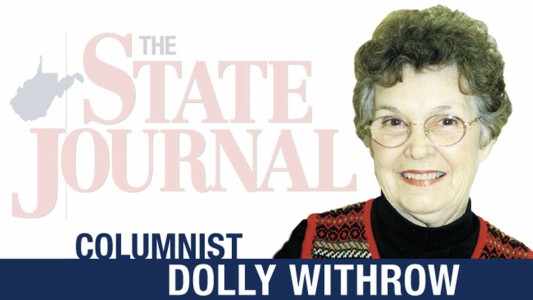
Look for columns by Dolly Withrow in The State Journal on everything from Capitalism to Cats!
Also, don't forget John Birch's blog reprinting pieces from his long career as a journalist and feature writer.
Teachers & Writers online magazine continues to publish wonderful, practical articles about teaching the arts to children, but often as in this one exploring the political with middle grade students, the audience should be as wide as possible. Take a look!
Check out Suzanne Gilbert and her work-- especially her book Tapioca Fire about a woman named Susan who tries to solve the mystery of a missing parent only to uncover a greater crime....
See latest poems on Barbara Crooker's website.
Ian Woolen's new eco-fiction, MUIR WOODS OR BUST is published by Coffeetown Press in Seattle. Featuring the backstory on how John Muir became John Muir (the industrial accident in Indianapolis in 1867). And a new DSM diagnosis: Eco-Mood Disorder. Meg Little Reilly, former Obama staffer, and author of WE ARE UNPREPARED, says : "Prescient, wry, and wholly original, MUIR WOODS OR BUST is the novel we need right now."
From Irene Weinberger Books:
A NOTE ABOUT AMAZON.COM
I have a lot of friends and colleagues who really despise Amazon. See the recent discussion in Issue # 184, as well as older comments from Jonathan Greene and others here.
The largest unionized bookstore in America has a webstore at Powells Books. Some people prefer shopping online there to shopping at Amazon.com. An alternative way to reach Powell's site and support the union is via http://www.powellsunion.com. Prices are the same but 10% of your purchase will go to support the union benefit fund.
WHERE TO FIND BOOKS MENTIONED IN THIS NEWSLETTER
If a book discussed in this newsletter has no source mentioned, don’t forget that you may be able to borrow it from your public library as either a hard copy or a digital copy. You may also buy or order from your local independent bookstore. (To find a bricks-and-mortar store, click the "shop indie" logo left).
To buy books online, I often use Bookfinder or Alibris. Bookfinder gives the price with shipping and handling, so you can compare what you’re really going to have to pay.
Another source for used and out-of-print books is All Book Stores. Also consider Paperback Book Swap, a postage-only way to trade books with other readers.
Still another place to buy books: Ingrid Hughes suggests "a great place for used books which sometimes turn out to be never-opened hard cover books is Biblio. I've bought many books from them, often for $4 including shipping."
If you are using an electronic reader (all kinds), don't forget free books at the Gutenberg Project—mostly classics, and free, free, free!
Kobobooks.com sells e-books for independent brick-and-mortar bookstores.
RESPONSES TO THIS NEWSLETTER
Please send responses to this newsletter and suggestions directly to Meredith Sue Willis . Unless you instruct otherwise, your responses may be edited for length and published in this newsletter.
BACK ISSUES click here.
LICENSE
Books for Readers Newsletter by Meredith Sue Willis is licensed under a Creative Commons Attribution-NoDerivs 3.0 Unported License. Permissions beyond the scope of this license may be available at https://www.meredithsuewillis.com. Some individual contributors may have other licenses.
Meredith Sue Willis, the producer of this occasional newsletter, is a writer and teacher and enthusiastic reader. Her books have been published by Charles Scribner's Sons, HarperCollins, Ohio University Press, Mercury House, West Virginia University Press, Monteymayor Press, Teachers & Writers Press, Hamilton Stone Editions, and others. She teaches at New York University's School of Professional Studies.
BACK ISSUES:
195 Voices for Unity; Ramp Hollow, A Time to Stir, Patti Smith, Nancy Abrams, Conrad, N.K. Jemisin, Walter Mosely & more.
#194 Allan Appel, Jane Lazarre, Caroline Sutton, Belinda Anderson on children's picture books.
#193 Larry Brown, Philip Roth, Ken Champion, Larissa Shmailo, Gillian Flynn, Jack Wheatcroft, Hilton Obenziner and more.
#192 Young Adut books from Appalachia; Virginia Woolf's To the Lighthouse; Michael Connelly; Middlemarch; historical murders in Appalachia.
#191 Oliver Sacks, N.K. Jemisin, Isabella and Ferdinand and their descendents, Depta, Highsmith, and more.
#190 Clearman, Eyes Glowing at the Edge of the Woods, Doerr, Octavia Butler, Colson Whitehead, Miss Fourth of July, Goodbye and more.
#189 J.D. Vance; Mitch Levenberg; Phillip Lopate; Barchester Towers; Judith Hoover; ; Les Liaisons Dangereuses; short science fiction reviews.
#188 Carmen Ferreiro-Esteban; The Hemingses of Monticello; Marc Harshman; Jews in the Civil War; Ken Champion; Rebecca West; Colum McCann
#187 Randi Ward, Burt Kimmelman, Llewellyn McKernan, Sir Walter Scott, Jonathan Lethem, Bill Luvaas, Phyllis Moore, Sarah Cordingley & more
#186 Diane Simmons, Walter Dean Myers, Johnny Sundstrom, Octavia Butler & more
#185 Monique Raphel High; Elizabeth Jane Howard; Phil Klay; Crystal Wilkinson
#184 More on Amazon; Laura Tillman; Anthony Trollope; Marily Yalom and the women of the French Revolution; Ernest Becker
#183 Hilton Obenzinger, Donna Meredith, Howard Sturgis, Tom Rob Smith, Daniel José Older, Elizabethe Vigée-Lebrun, Veronica Sicoe
#182 Troy E. Hill, Mitchell Jackson, Rita Sims Quillen, Marie Houzelle, Frederick Busch, more Dickens
#181 Valerie Nieman, Yorker Keith, Eliot Parker, Ken Champion, F.R. Leavis, Charles Dickens
#180 Saul Bellow, Edwina Pendarvis, Matthew Neill Null, Judith Moffett, Theodore Dreiser, & more
#179 Larissa Shmailo, Eric Frizius, Jane Austen, Go Set a Watchman and more
#178 Ken Champion, Cat Pleska, William Demby's Beetlecreek, Ron Rash, Elizabeth Gaskell, and more.
#177 Jane Hicks, Daniel Levine, Constance Fenimore Woolson, Ken Chamption, Patricia Harman
#176 Robert Gipe, Justin Torres, Marilynne Robinson, Velma Wallis, Larry McMurty, Charlotte Brontë, Henry James, Fumiko Enchi, Shelley Ettinger
#175 Lists of what to read for the new year; MOUNTAIN MOTHER GOOSE: CHILD LORE OF WEST VIRGINIA; Peggy Backman
#174 Christian Sahner, John Michael Cummings, Denton Loving, Madame Bovary
#173 Stephanie Wellen Levine, S.C. Gwynne, Ed Davis's Psalms of Israel Jones, Quanah Parker, J.G. Farrell, Lubavitcher girls
#172 Pat Conroy, Donna Tartt, Alice Boatwright, Fumiko Enchi, Robin Hobb, Rex Stout
#171 Robert Graves, Marie Manilla, Johnny Sundstrom, Kirk Judd
#170 John Van Kirk, Carter Seaton,Neil Gaiman, Francine Prose, The Murder of Helen Jewett, Thaddeus Rutkowski
#169 Pearl Buck's The Exile and Fighting Angel; Larissa Shmailo; Liz Lewinson; Twelve Years a Slave, and more
#168 Catherine the Great, Alice Munro, Edith Poor, Mitch Levenberg, Vonnegut, Mellville, and more!
#167 Belinda Anderson; Anne Shelby; Sean O'Leary, Dragon tetralogy; Don Delillo's Underworld
#166 Eddy Pendarvis on Pearl S. Buck; Theresa Basile; Miguel A. Ortiz; Lynda Schor; poems by Janet Lewis; Sarah Fielding
#165 Janet Lewis, Melville, Tosltoy, Irwin Shaw!
#164 Ed Davis on Julie Moore's poems; Edith Wharton; Elaine Drennon Little's A Southern Place; Elmore Leonard
#163 Pamela Erens, Michael Harris, Marlen Bodden, Joydeep Roy-Battacharya, Lisa J. Parker, and more
#162 Lincoln, Joseph Kennedy, Etel Adnan, Laura Treacy Bentley, Ron Rash, Sophie's Choice, and more
#161 More Wilkie Collins; Duff Brenna's Murdering the Mom; Nora Olsen's Swans & Klons; Lady Audley's Secret
#160 Carolina De Robertis, The Immortal Life of Henrietta Lacks, Ross King's The Judgment of Paris
#159 Tom Jones. William Luvaas, Marc Harshman, The Good Earth, Lara Santoro, American Psycho
#158 Chinua Achebe's Man of the People; The Red and the Black; McCarthy's C.; Farm City; Victor Depta;Myra Shapiro
#157 Alice Boatwright, Reamy Jansen, Herta Muller, Knut Hamsun, What Maisie Knew; Wanchee Wang, Dolly Withrow.
#156 The Glass Madonna; A Revelation
#155 Buzz Bissinger; reader suggestions; Satchmo at the Waldorf
#154 Hannah Brown, Brad Abruzzi, Thomas Merton
#153 J.Anthony Lukas, Talmage Stanley's The Poco Fields, Devil Anse
#152 Marc Harshman guest editor; John Burroughs; Carol Hoenig
#151 Deborah Clearman, Steve Schrader, Paul Harding, Ken Follet, Saramago-- and more!
#150 Mitch Levenberg, Johnny Sundstrom, and Isabel Wilkerson's The Warmth of Other Suns.
#149 David Weinberger's Too Big to Know; The Shining; The Tiger's Wife.
#148 The Moonstone, Djibouti, Mark Perry on the Grimké family
#147 Jane Lazarre's new novel; Johnny Sundstrom; Emotional Medicine Rx; Walter Dean Myers, etc.
#146 Henry Adams AGAIN! Also,Fun Home: a Tragicomic
#145 Henry Adams, Darnell Arnoult, Jaimy Gordon, Charlotte Brontë
#144 Carter Seaton, NancyKay Shapiro, Lady Murasaki Shikibu
#143 Little America; Guns,Germs, and Steel; The Trial
#142 Blog Fiction, Leah by Seymour Epstein, Wolf Hall, etc.
#141 Dreama Frisk on Hilary Spurling's Pearl Buck in China; Anita Desai; Cormac McCarthy
#140 Valerie Nieman's Blood Clay, Dolly Withrow
#139 My Kindle, The Prime Minister, Blood Meridian
#138 Special on Publicity by Carter Seaton
#137 Michael Harris's The Chieu Hoi Saloon; Game of Thrones; James Alexander Thom's Follow the River
#136 James Boyle's The Creative Commons; Paola Corso, Joanne Greenberg, Monique Raphel High, Amos Oz
#135 Reviews by Carole Rosenthal, Jeffrey Sokolow, and Wanchee Wang.
#134 Daniel Deronda, books with material on black and white relations in West Virginia
#133 Susan Carpenter, Irene Nemirovsky, Jonathan Safran Foer, Kanafani, Joe Sacco
#132 Karen Armstrong's A History of God; JCO's The Falls; The Eustace Diamonds again.
#131 The Help; J. McHenry Jones, Reamy Jansen, Jamie O'Neill, Michael Chabon.
#130 Lynda Schor, Ed Myers, Charles Bukowski, Terry Bisson, The Changing Face of Anti-Semitism
#129 Baltasar and Blimunda; Underground Railroad; Navasky's Naming Names, small press and indie books.
#128 Jeffrey Sokolow on Histories and memoirs of the Civil Rights Movement
#127 Olive Kitteridge; Urban fiction; Shelley Ettinger on Joyce Carol Oates
#126 Jack Hussey's Ghosts of Walden, The Leopard , Roger's Version, The Reluctanct Fundamentalist
#125 Lee Maynard's The Pale Light of Sunset; Books on John Brown suggested by Jeffrey Sokolow
#124 Cloudsplitter, Founding Brothers, Obenzinger on Bradley's Harlem Vs. Columbia University
#123 MSW's summer reading round-up; Olive Schreiner; more The Book Thief; more on the state of editing
#122 Left-wing cowboy poetry; Jewish partisans during WW2; responses to "Hire a Book Doctor?"
#121 Jane Lazarre's latest; Irving Howe's Leon Trotsky; Gringolandia; "Hire a Book Doctor?"
#120 Dreama Frisk on The Book Thief; Mark Rudd; Thulani Davis's summer reading list
#119 Two Histories of the Jews; small press books for Summer
#118 Kasuo Ichiguro, Jeanette Winterson, The Carter Family!
#117 Cat Pleska on Ann Pancake; Phyllis Moore on Jayne Anne Phillips; and Dolly Withrow on publicity
#116 Ann Pancake, American Psycho, Marc Harshman on George Mackay Brown
#115 Adam Bede, Nietzsche, Johnny Sundstrom
#114 Judith Moffett, high fantasy, Jared Diamond, Lily Tuck
#113 Espionage--nonfiction and fiction: Orson Scott Card and homophobia
#112 Marc Kaminsky, Nel Noddings, Orson Scott Card, Ed Myers
#111 James Michener, Mary Lee Settle, Ardian Gill, BIll Higginson, Jeremy Osner, Carol Brodtick
#110 Nahid Rachlin, Marion Cuba on self-publishing; Thulani Davis, The Road, memoirs
#109 Books about the late nineteen-sixties: Busy Dying; Flying Close to the Sun; Looking Good; Trespassers
#108 The Animal Within; The Ground Under My Feet; King of Swords
#107 The Absentee; Gorky Park; Little Scarlet; Howl; Health Proxy
#106 Castle Rackrent; Harry Potter and the Deathly Hallows; More on Drown; Blindness & more
#105 Everything is Miscellaneous, The Untouchable, Kettle Bottom by Diane Gilliam Fisher
#104 Responses to Shelley on Junot Diaz and more; More best books of 2007
#103 Guest Editor: Shelley Ettinger and her best books of 2007
#102 Saramago's BLINDNESS; more on NEVER LET ME GO; George Lies on Joe Gatski
#101 My Brilliant Career, The Scarlet Letter, John Banville, Never Let Me Go
#100 The Poisonwood Bible, Pamela Erens, More Harry P.
#99 Jonathan Greene on Amazon.com; Molly Gilman on Dogs of Babel
#98 Guest editor Pat Arnow; more on the Amazon.com debate
#97 Using Thomas Hardy; Why I Write; more
#96 Lucy Calkins, issue fiction for young adults
#95 Collapse, Harry Potter, Steve Geng
#94 Alice Robinson-Gilman, Maynard on Momaday
#93 Kristin Lavransdatter, House Made of Dawn, Leaving Atlanta
#92 Death of Ivan Ilych; Memoirs
#91 Richard Powers discussion
#90 William Zinsser, Memoir, Shakespeare
#89 William Styron, Ellen Willis, Dune, Germinal, and much more
#88 Sandra Cisneros's Caramelo
#87 Wings of the Dove, Forever After (9/11 Teachers)
#86 Leora Skolkin-Smith, American Pastoral, and more
#85 Wobblies, Winterson, West Virginia Encyclopedia
#84 Karen Armstrong, Geraldine Brooks, Peter Taylor
#83 3-Cornered World, Da Vinci Code
#82 The Eustace Diamonds, Strapless, Empire Falls
#81 Philip Roth's The Plot Against America , Paola Corso
#80 Joanne Greenberg, Ed Davis, more Murdoch; Special Discussion on Memoir--Frey and J.T. Leroy
#79 Adam Sexton, Iris Murdoch, Hemingway
#78 The Hills at Home; Tess of the D'Urbervilles; Jean Stafford
#77 On children's books--guest editor Carol Brodtrick
#76 Mary Lee Settle, Mary McCarthy
#75 The Makioka Sisters
#74 In Our Hearts We Were Giants
#73 Joyce Dyer
#72 Bill Robinson WWII story
#71 Eva Kollisch on G.W. Sebald
#70 On Reading
#69 Nella Larsen, Romola
#68 P.D. James
#67 The Medici
#66 Curious Incident,Temple Grandin
#65 Ingrid Hughes on Memoir
#64 Boyle, Worlds of Fiction
#63 The Namesame
#62 Honorary Consul; The Idiot
#61 Lauren's Line
#60 Prince of Providence
#59 The Mutual Friend, Red Water
#58 AkÉ, Season of Delight
#57 Screaming with Cannibals
#56 Benita Eisler's Byron
#55 Addie, Hottentot Venus, Ake
#54 Scott Oglesby, Jane Rule
#53 Nafisi,Chesnutt, LeGuin
#52 Keith Maillard, Lee Maynard
#51 Gregory Michie, Carter Seaton
#50 Atonement, Victoria Woodhull biography
#49 Caucasia
#48 Richard Price, Phillip Pullman
#47 Mid- East Islamic World Reader
#46 Invitation to a Beheading
#45 The Princess of Cleves
#44 Shelley Ettinger: A Few Not-so-Great Books
#43 Woolf, The Terrorist Next Door
#42 John Sanford
#41 Isabelle Allende
#40 Ed Myers on John Williams
#39 Faulkner
#38 Steven Bloom No New Jokes
#37 James Webb's Fields of Fire
#36 Middlemarch
#35 Conrad, Furbee, Silas House
#34 Emshwiller
#33 Pullman, Daughter of the Elm
#32 More Lesbian lit; Nostromo
#31 Lesbian fiction
#30 Carol Shields, Colson Whitehead
#29 More William Styron
#28 William Styron
#27 Daniel Gioseffi
#26 Phyllis Moore
#25 On Libraries....
#24 Tales of the City
#23 Nonfiction, poetry, and fiction
#22 More on Why This Newsletter
#21 Salinger, Sarah Waters, Next of Kin
#20 Jane Lazarre
#19 Artemisia Gentileschi
#18 Ozick, Coetzee, Joanna Torrey
#17 Arthur Kinoy
#16 Mrs. Gaskell and lots of other suggestions
#15 George Dennison, Pat Barker, George Eliot
#14 Small Presses
#13 Gap Creek, Crum
#12 Reading after 9-11
#11 Political Novels
#10 Summer Reading ideas
#9 Shelley Ettinger picks
#8 Harriette Arnow's Hunter's Horn
#7 About this newsletter
#6 Maria Edgeworth
#5 Tales of Good and Evil; Moon Tiger
#4 Homer Hickam and The Chosen
#3 J.T. LeRoy and Tale of Genji
#2 Chick Lit
#1 About this newsletter
Biography Books for Readers Newsletter Contact Home MSW Info
MSW's Books Online Classes Order Books MSW Online Teens Writing Exercises
.
.
